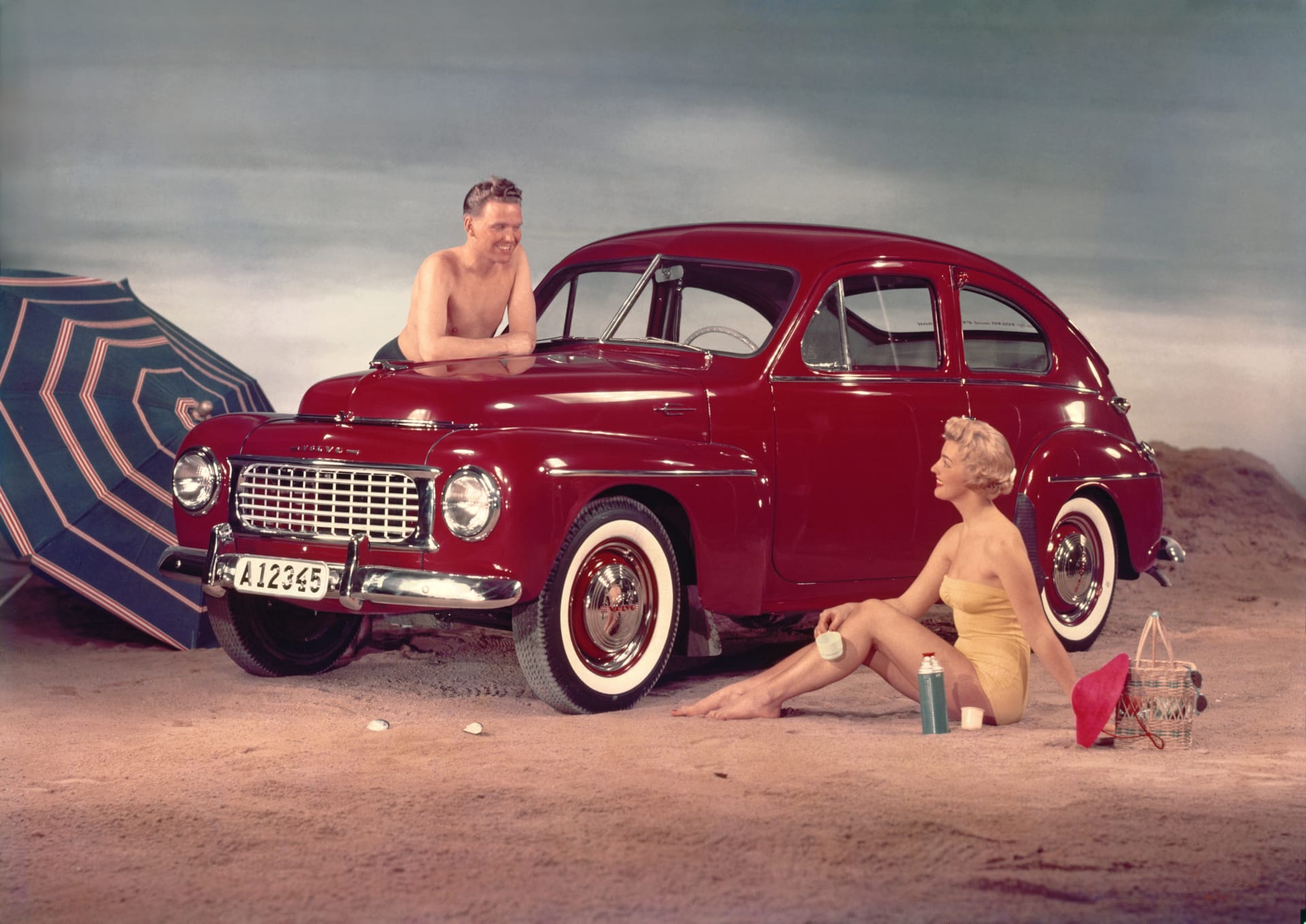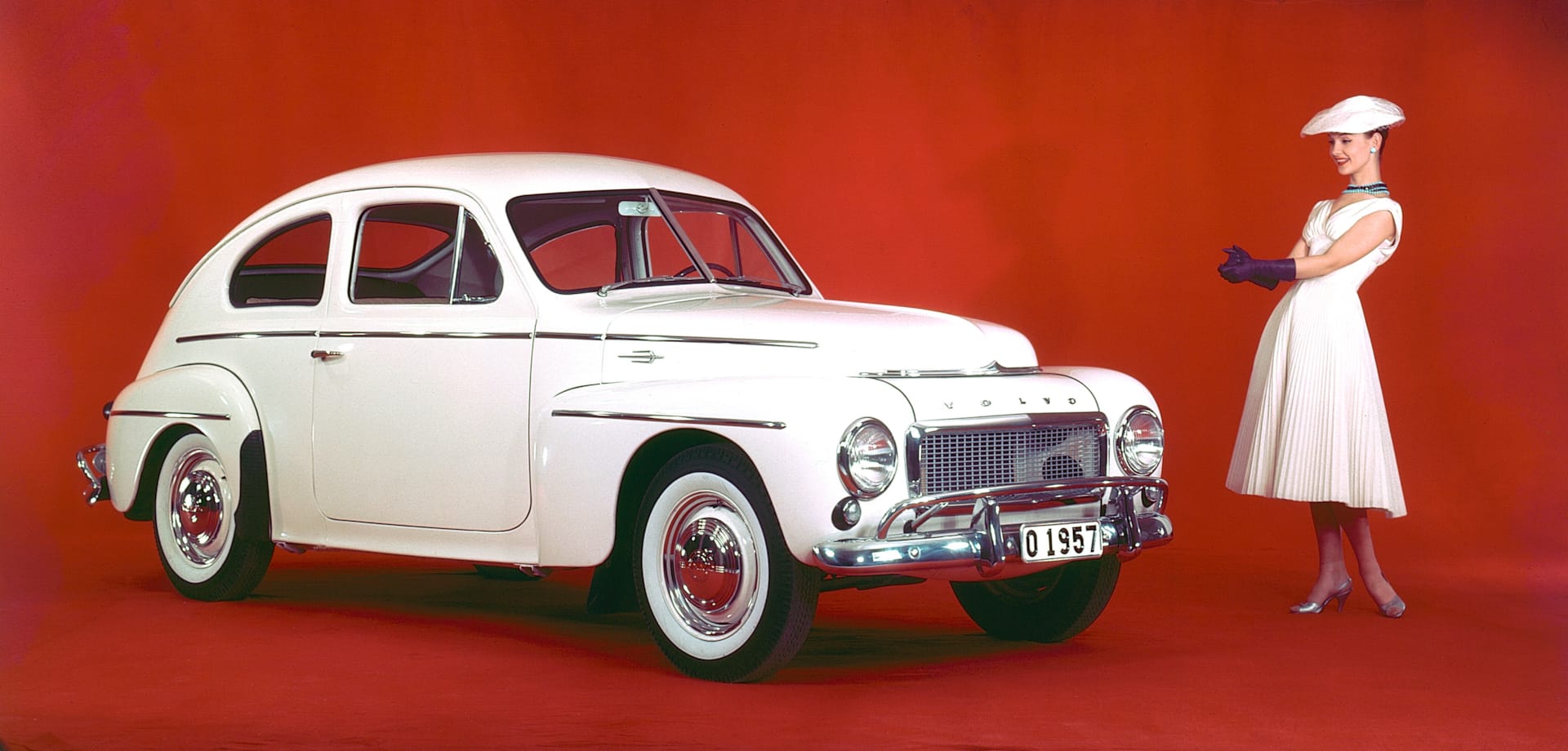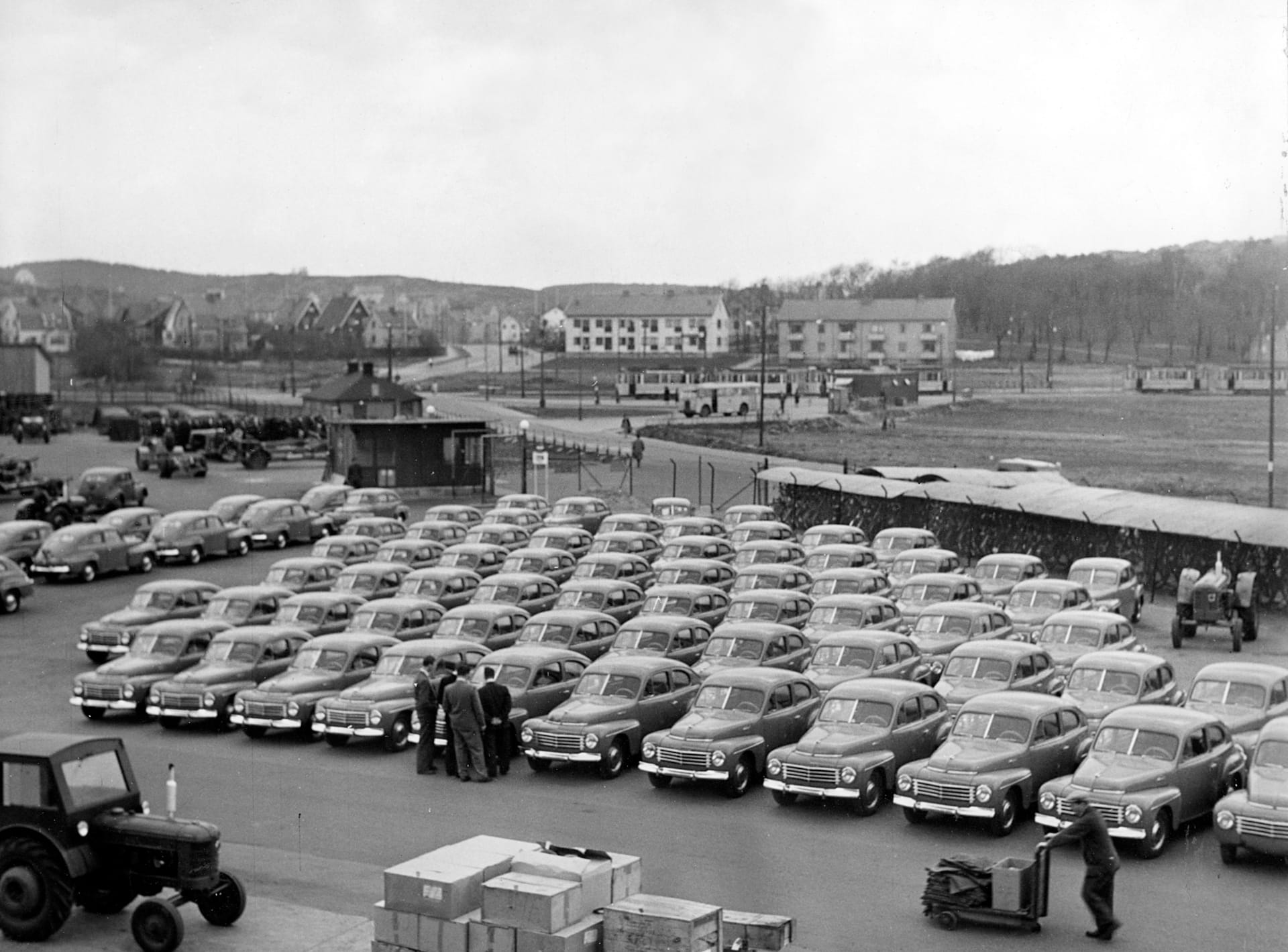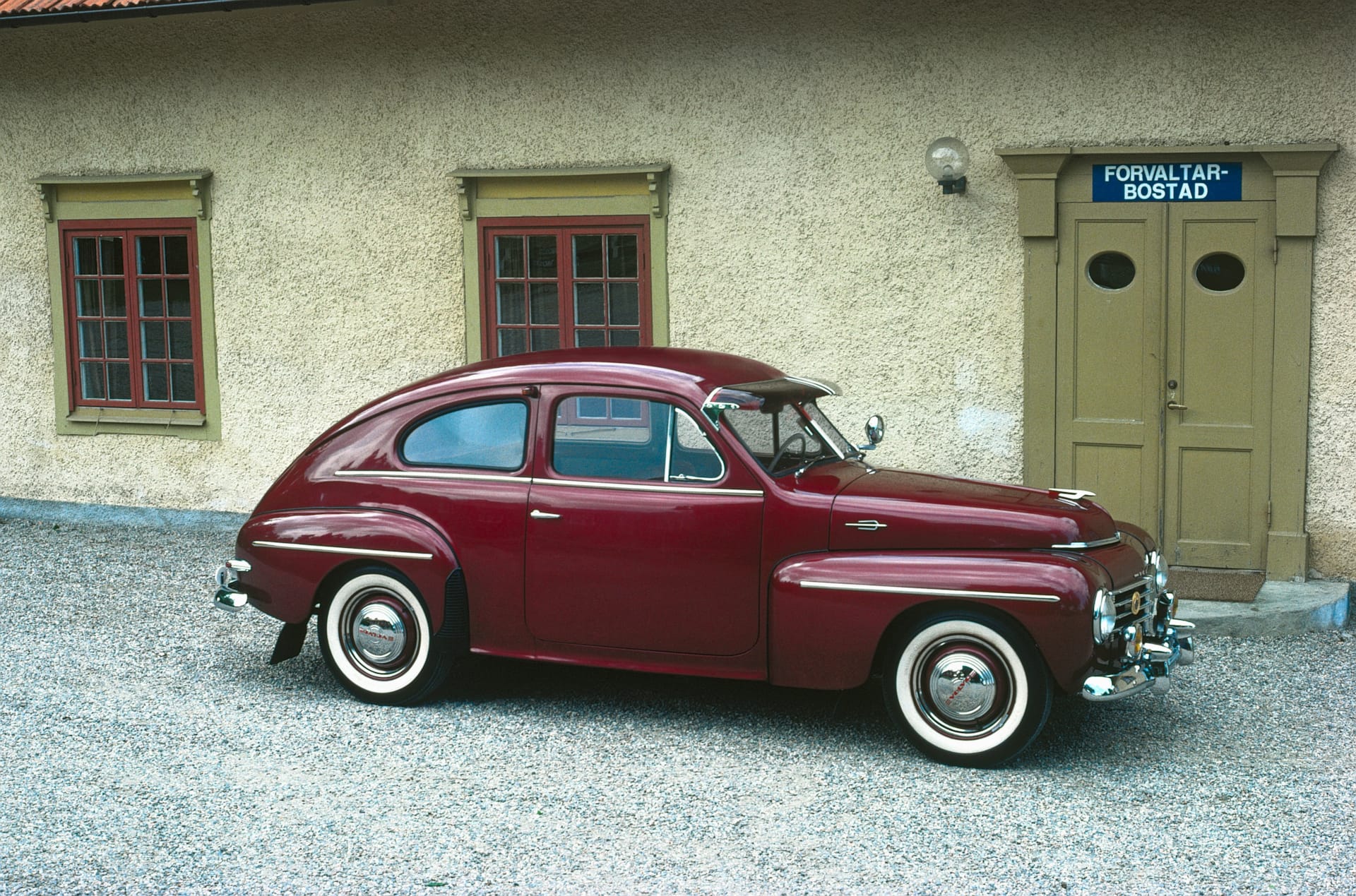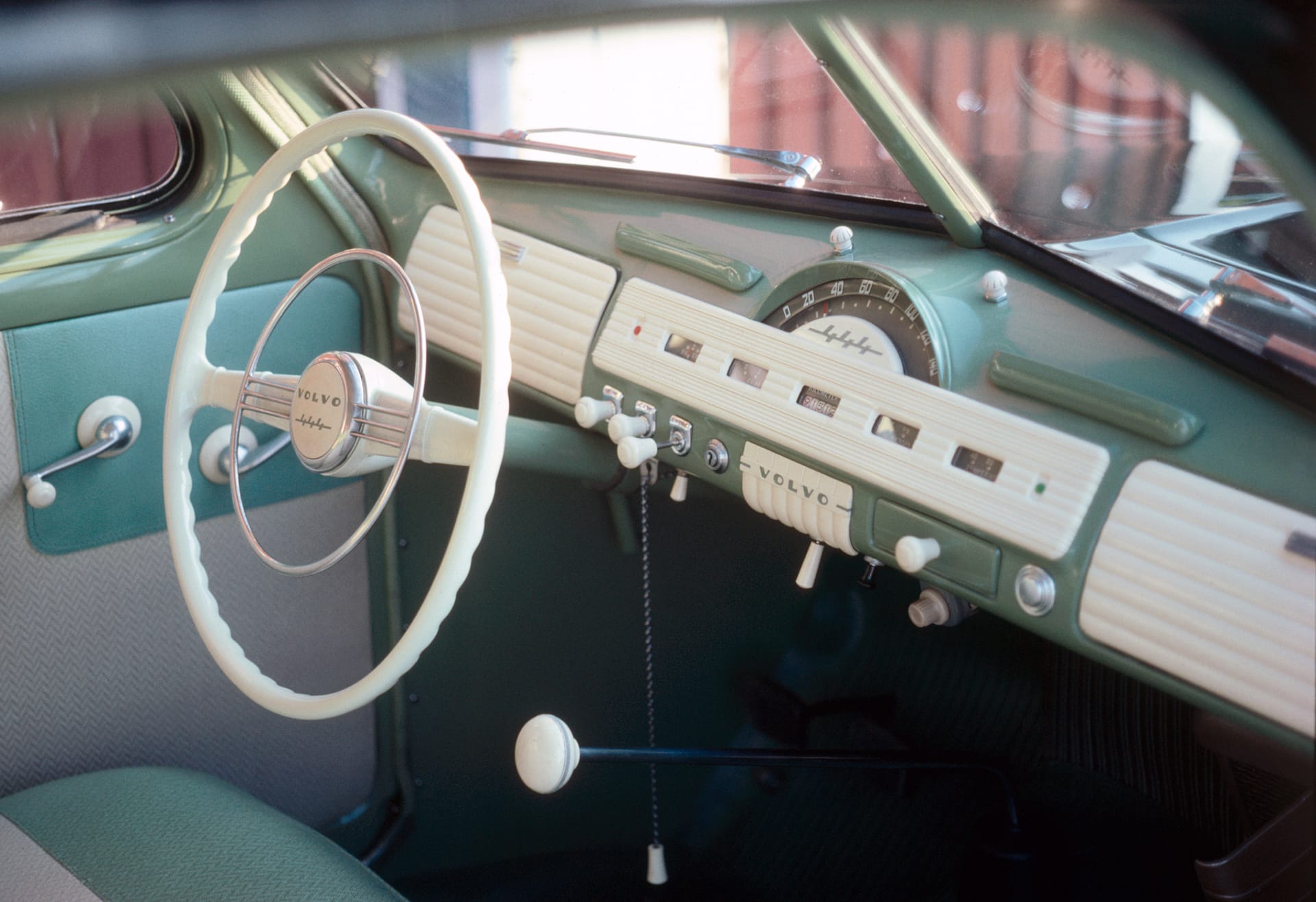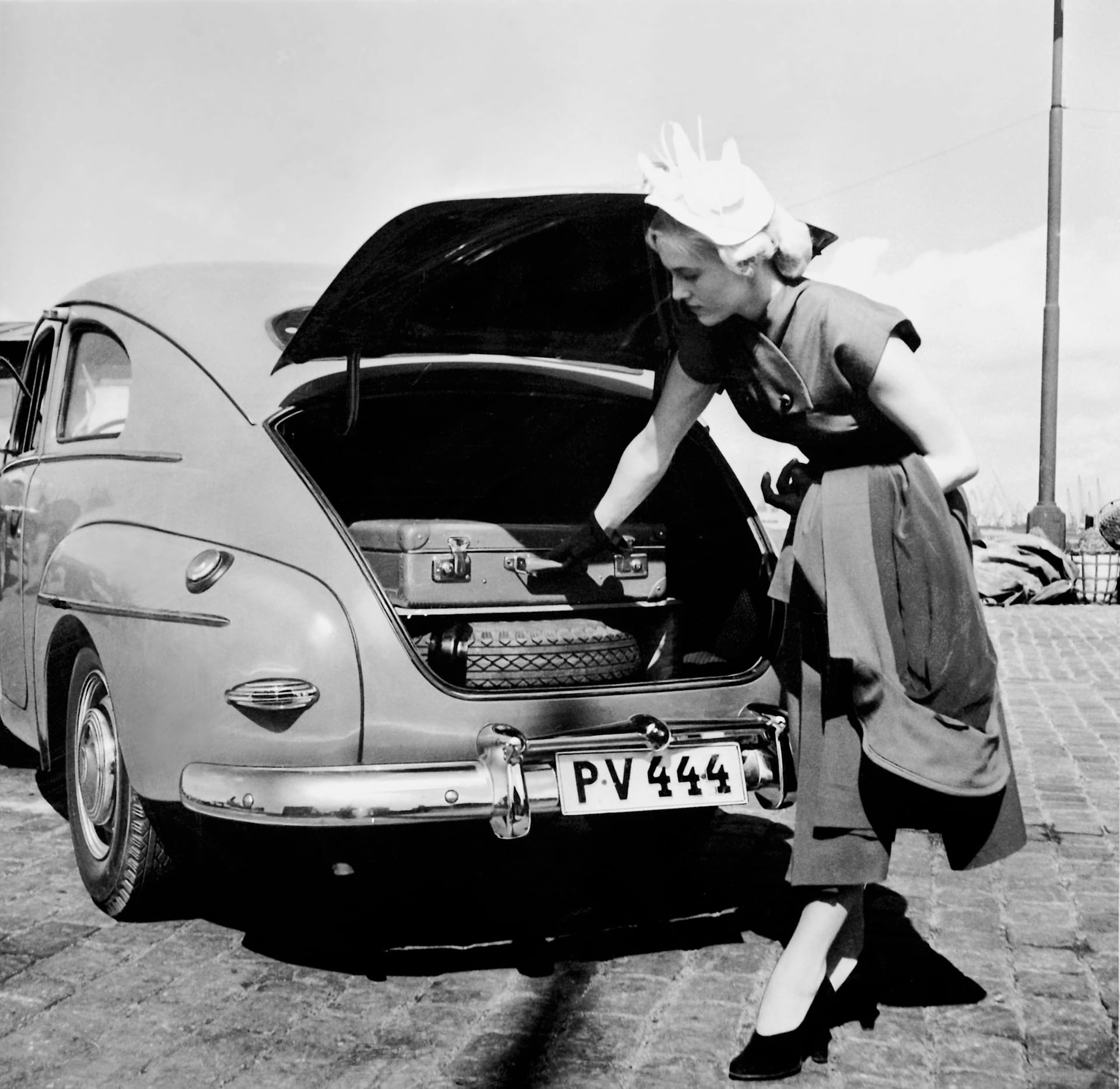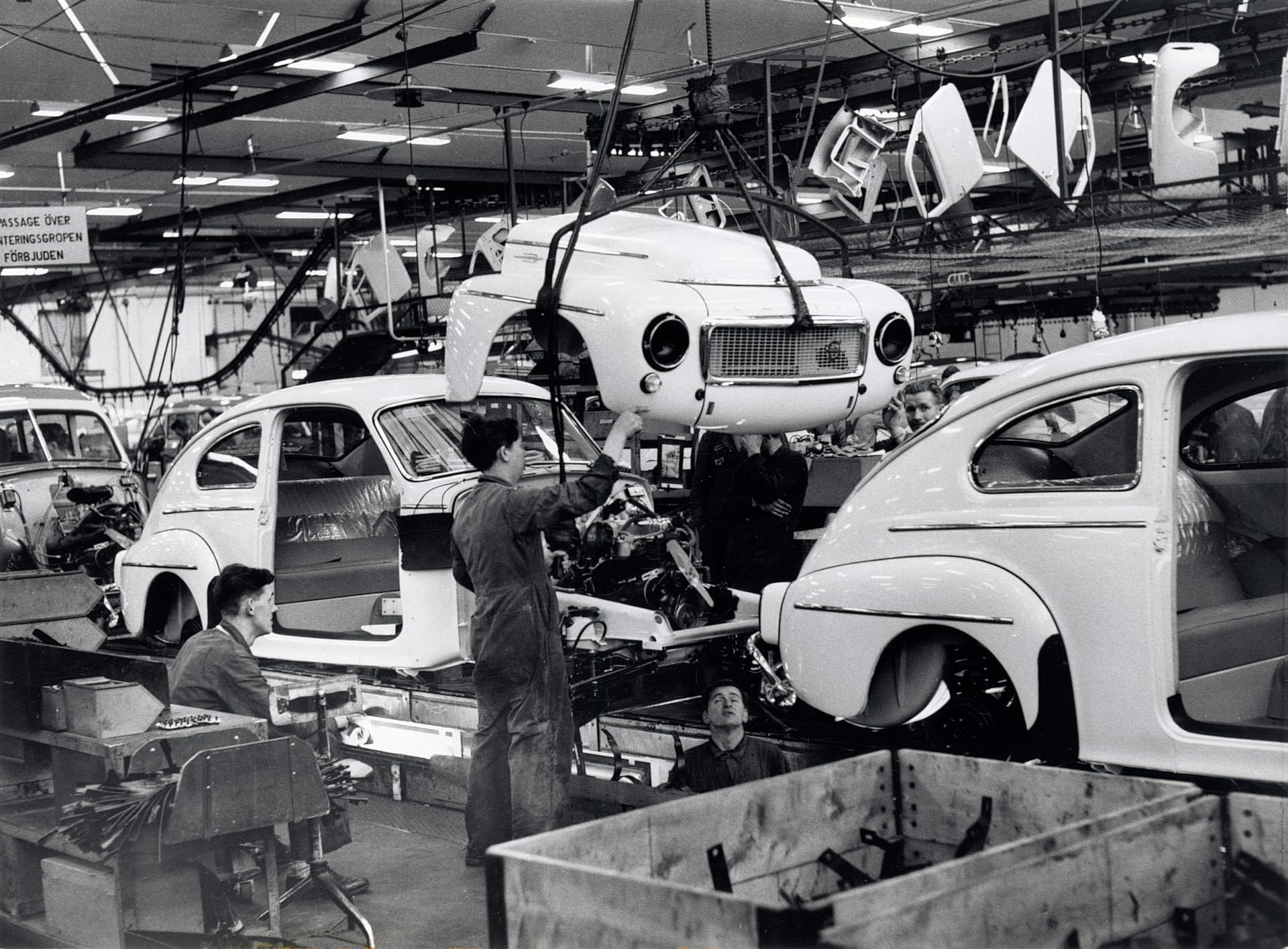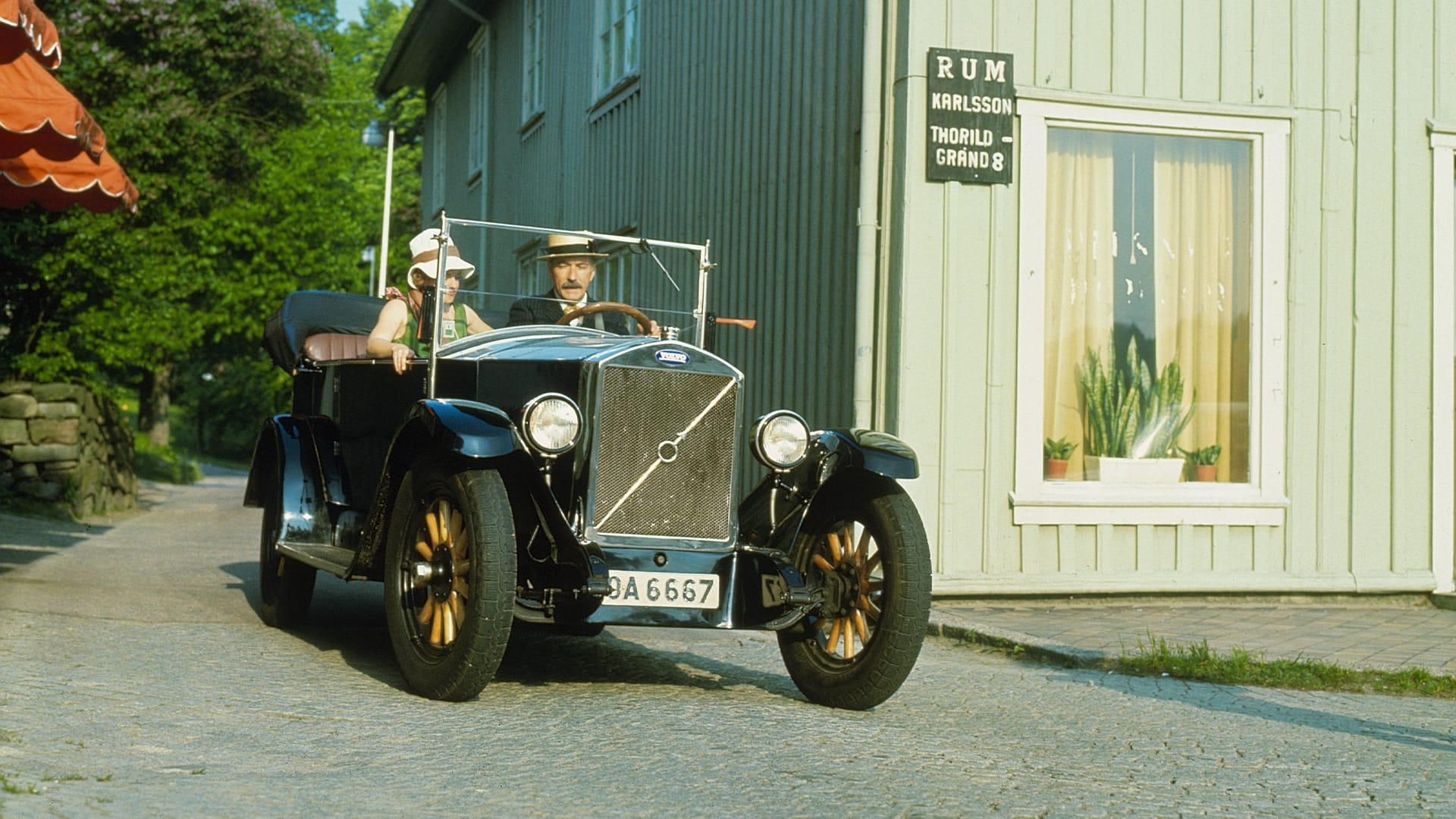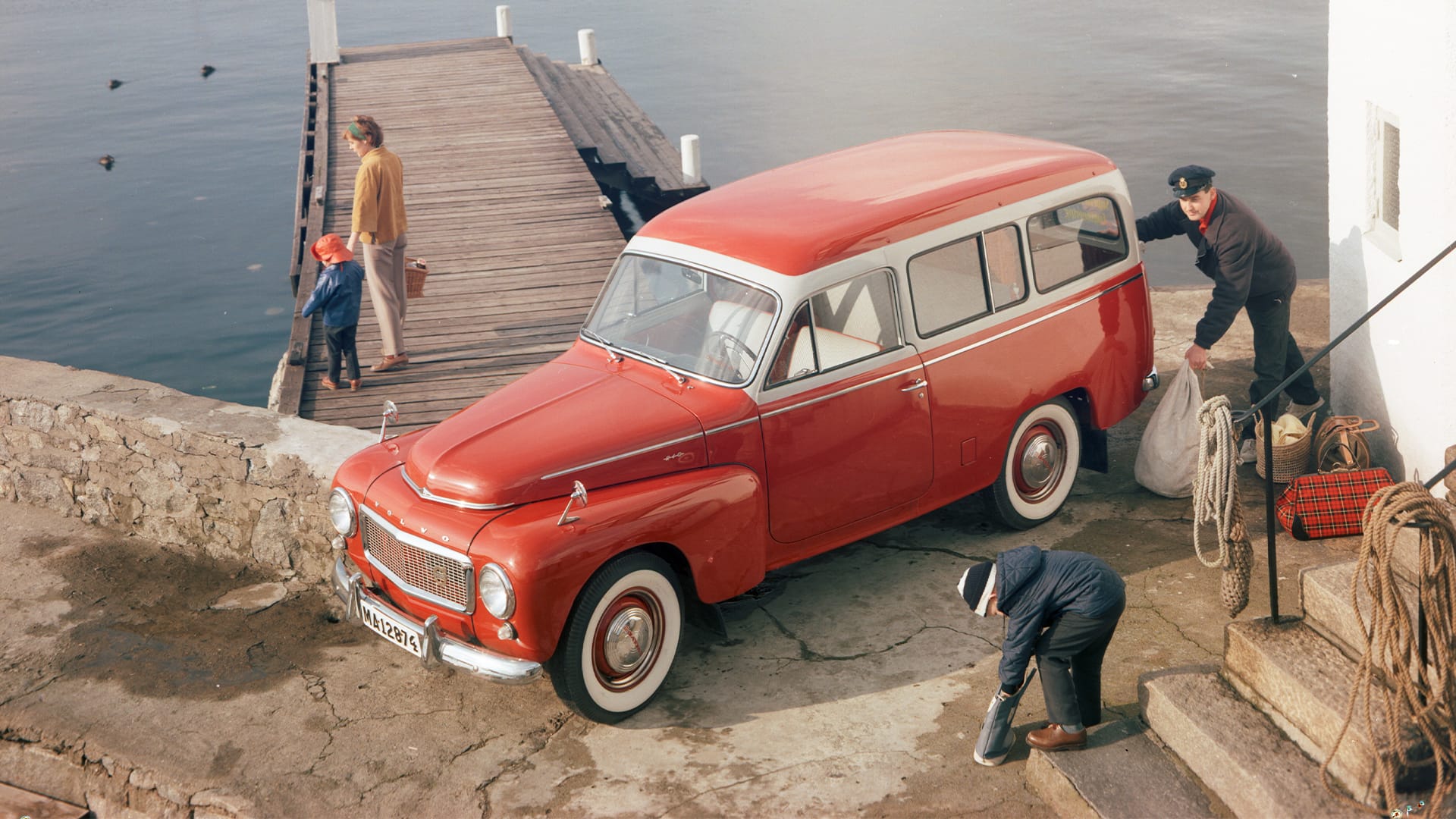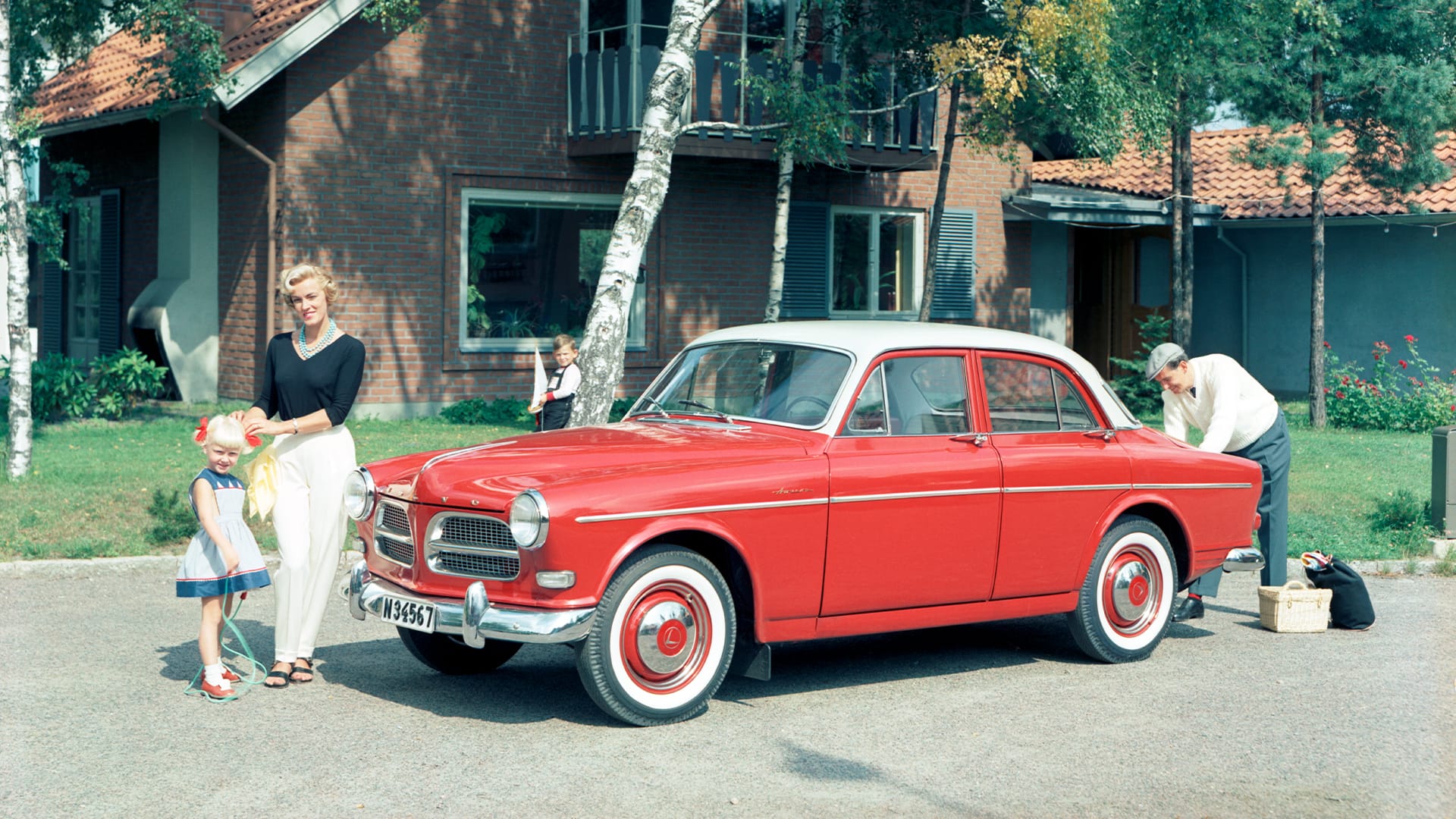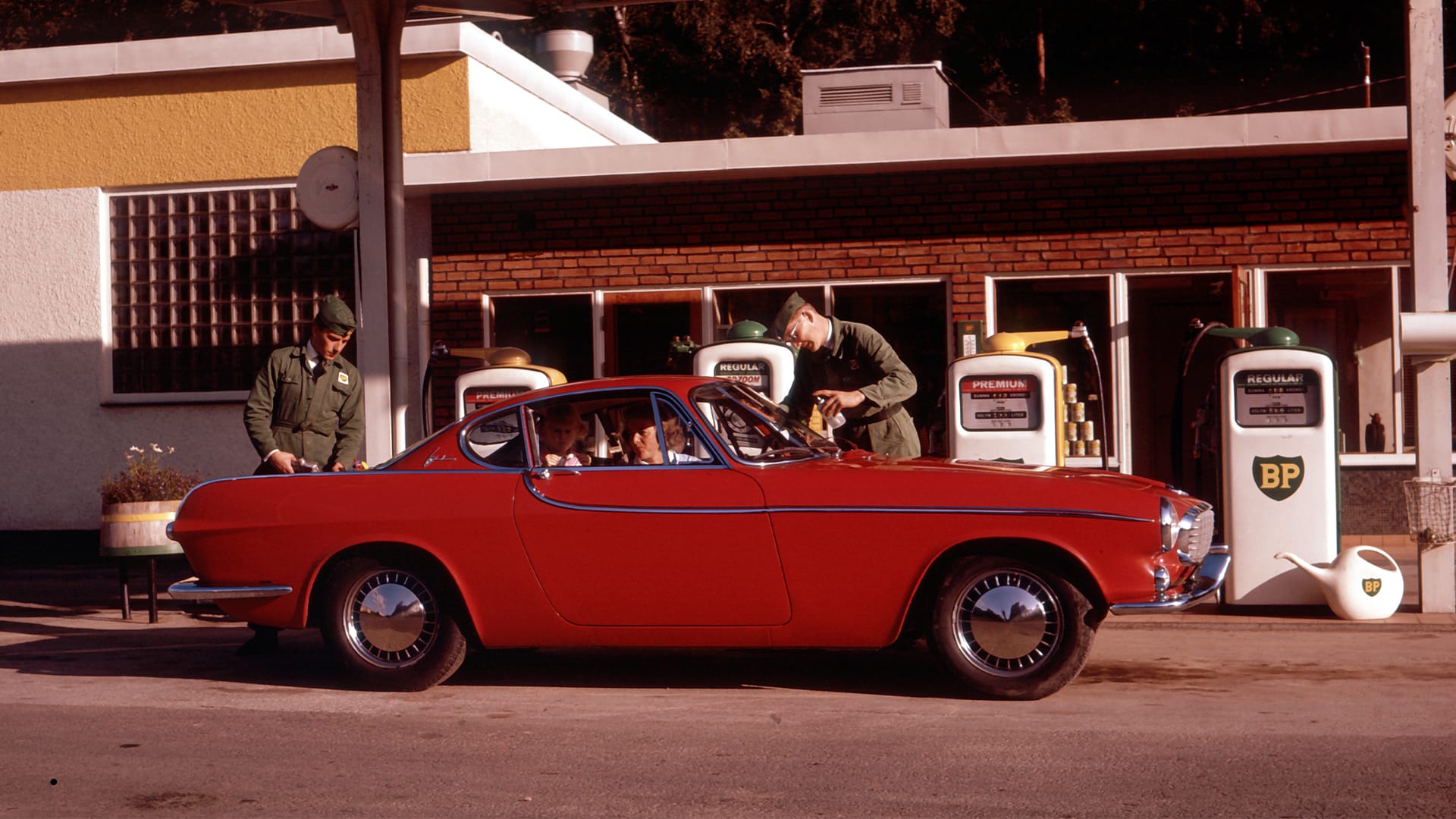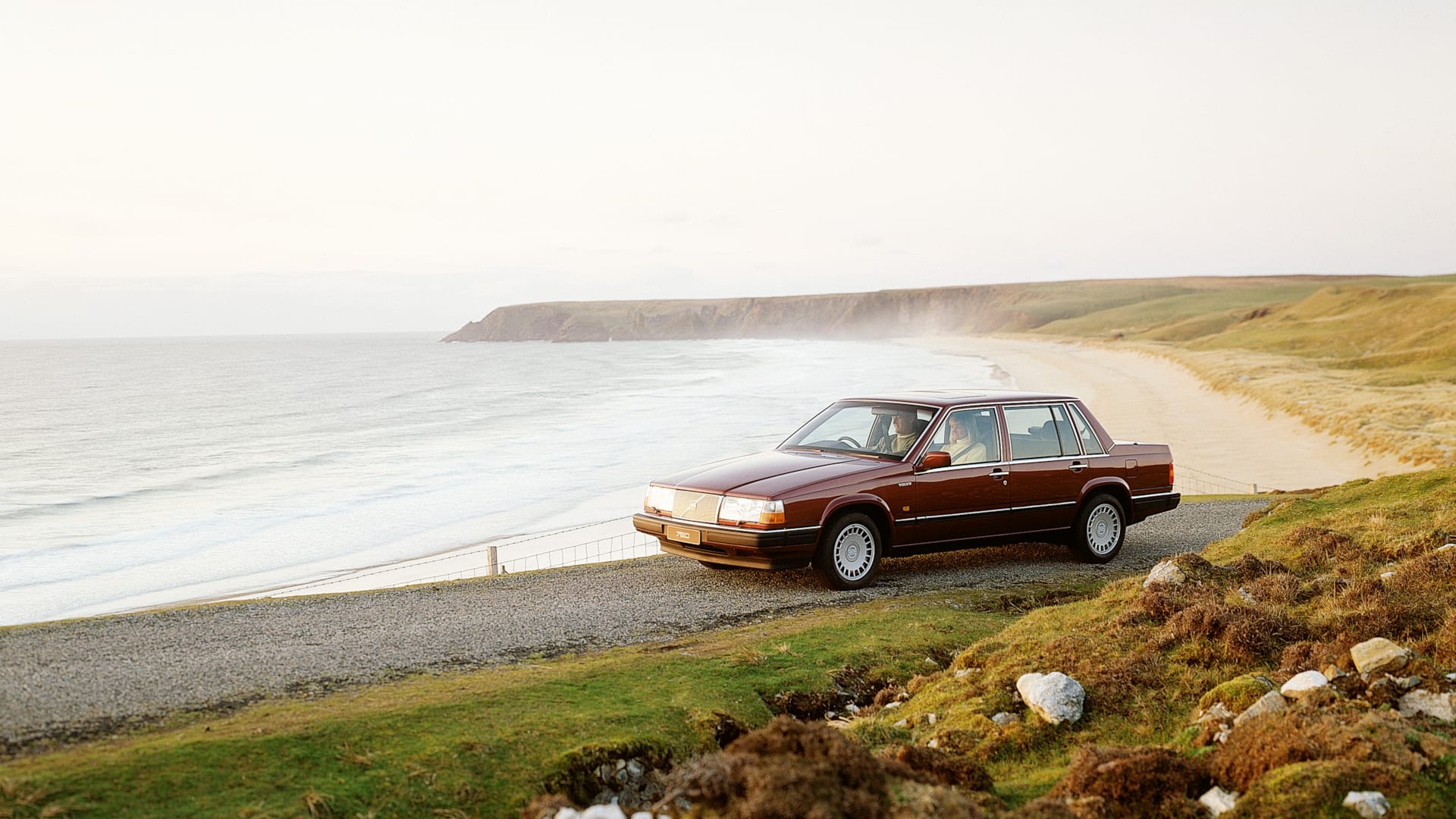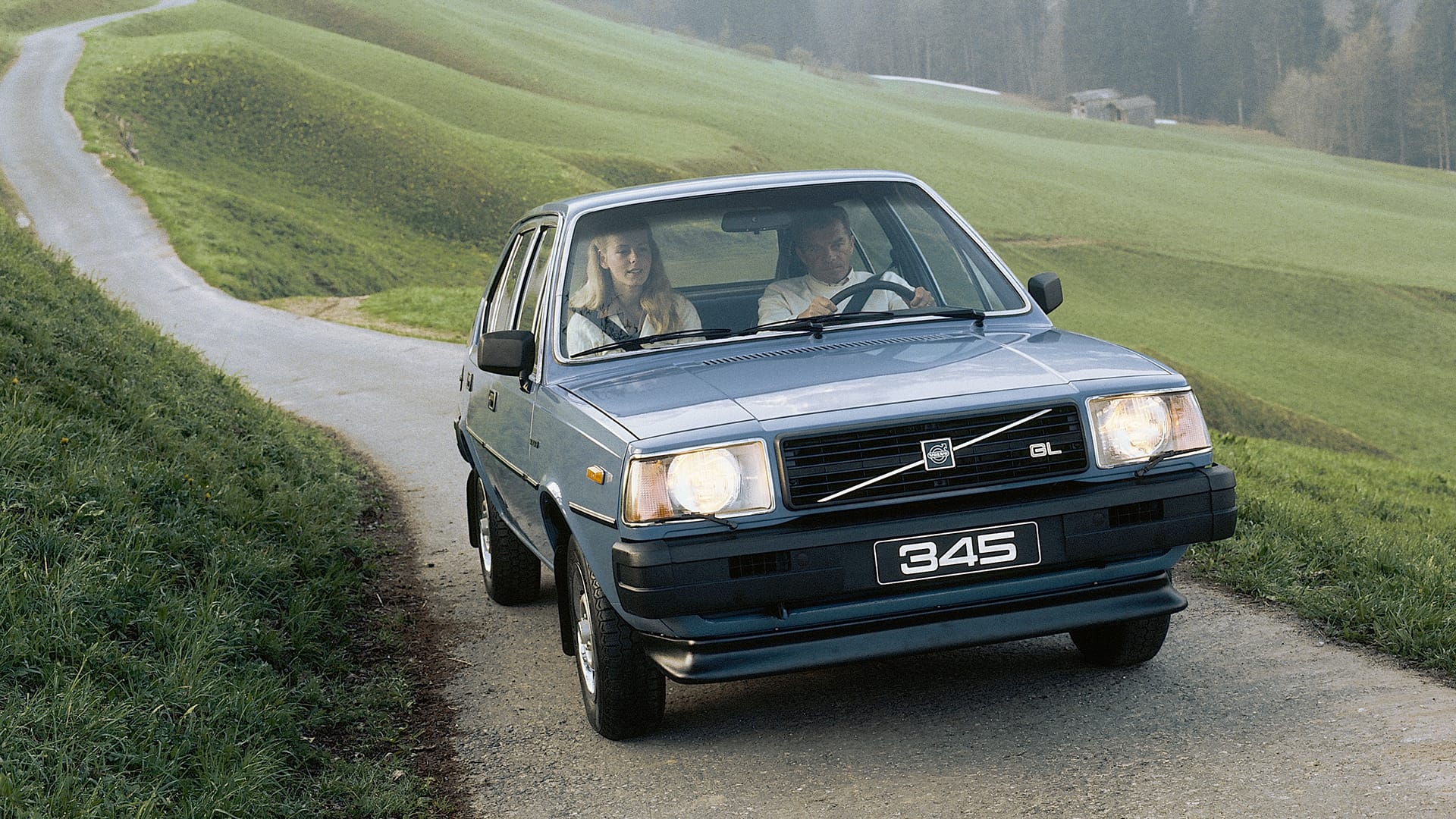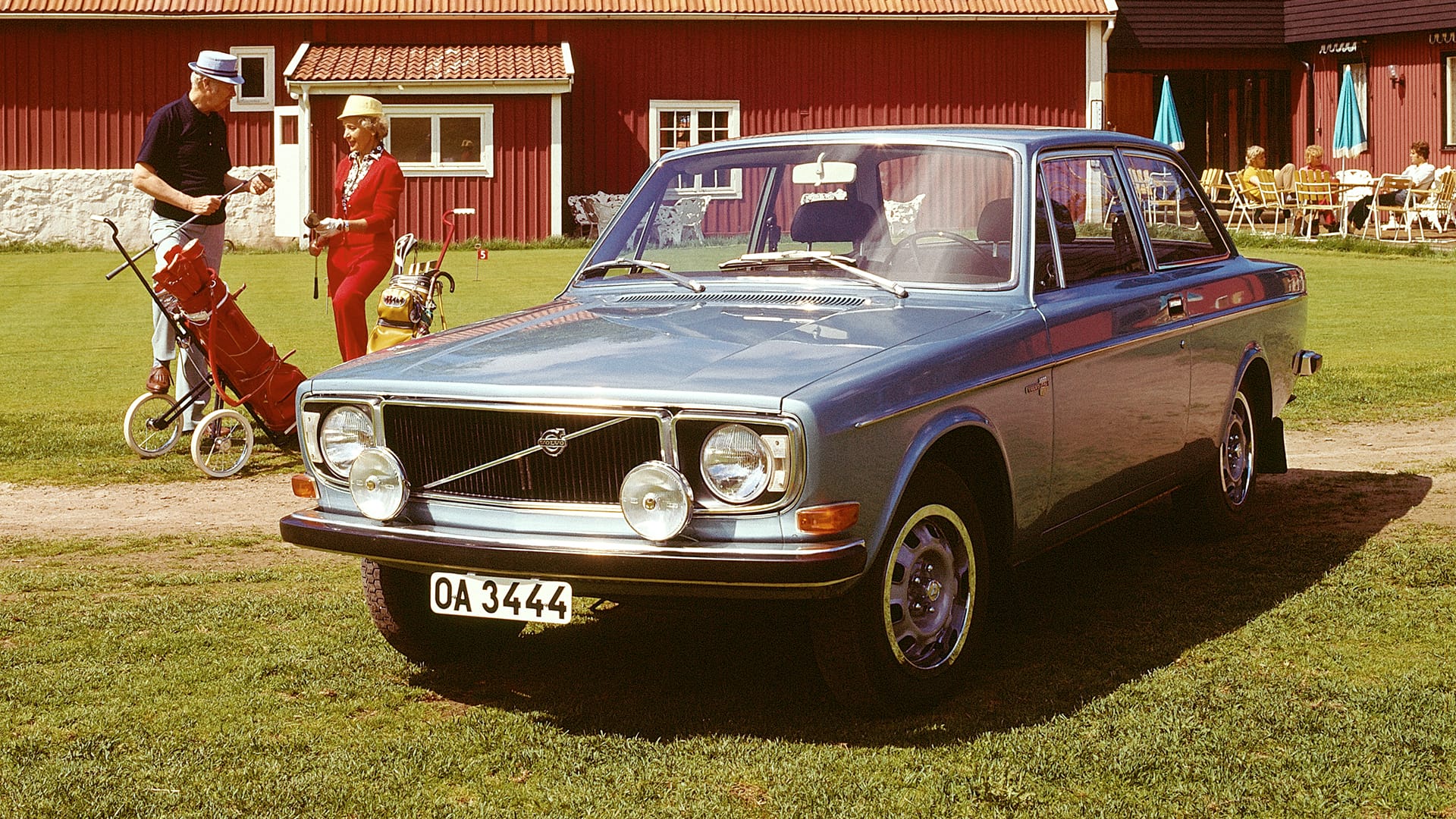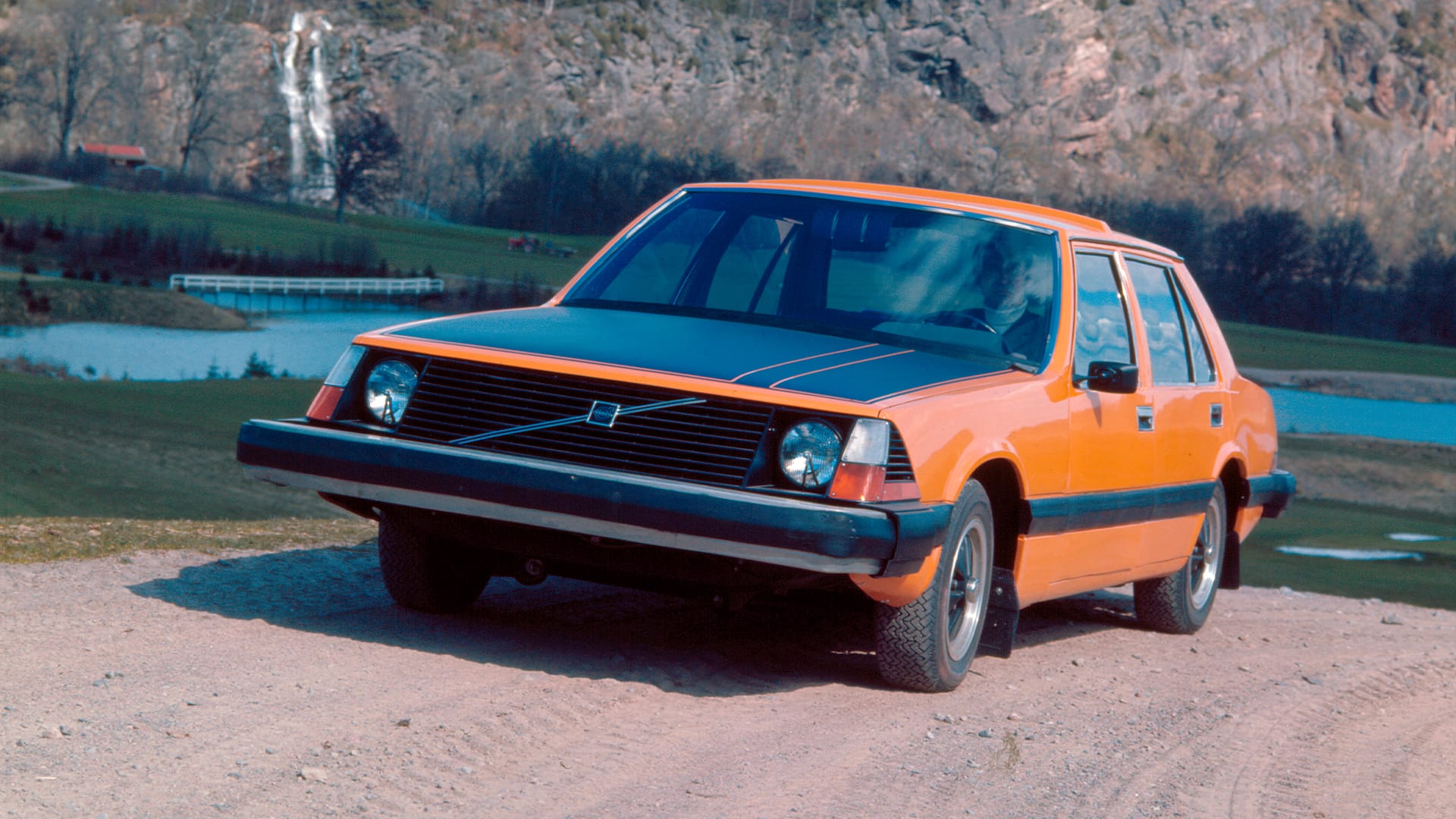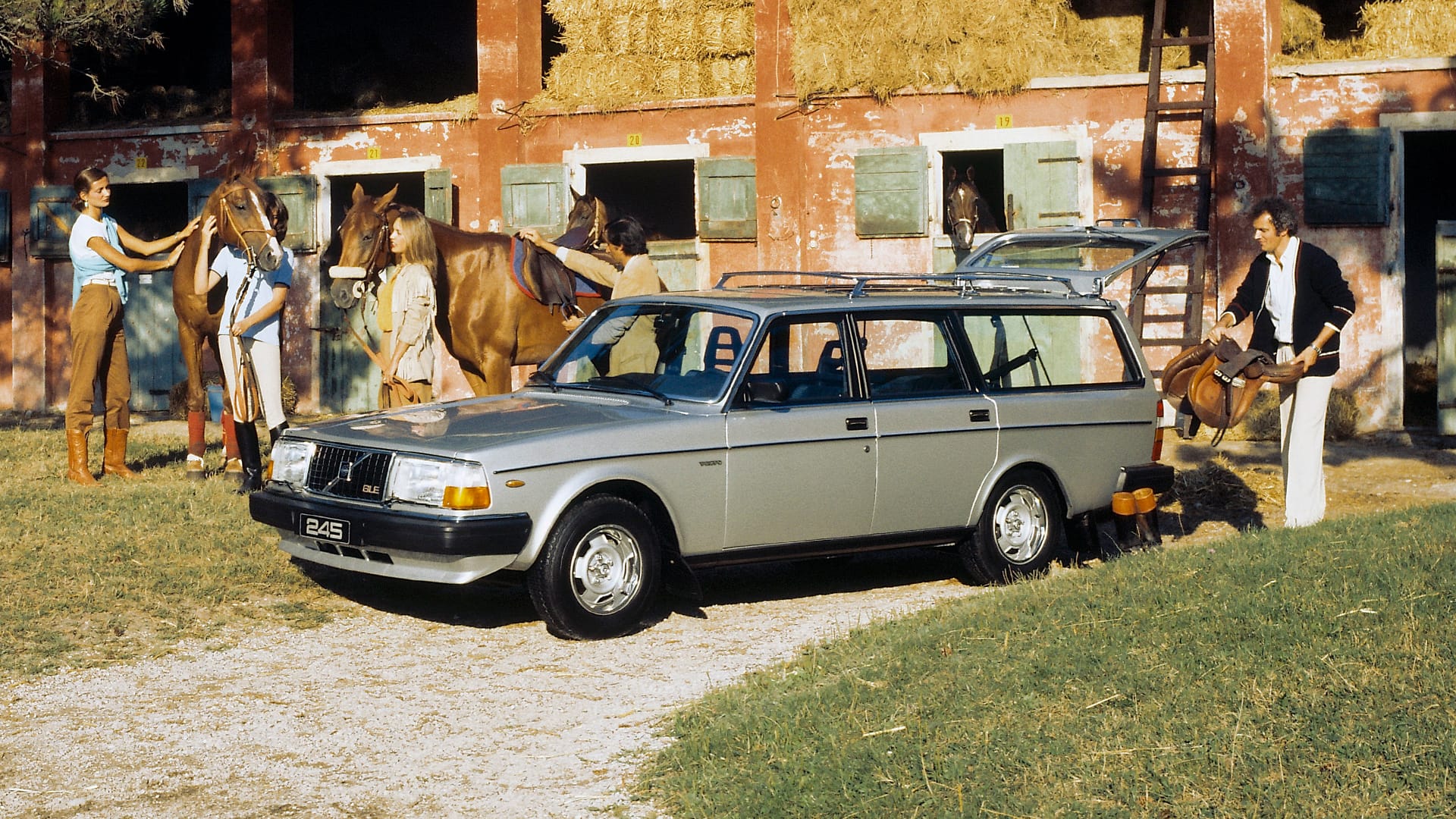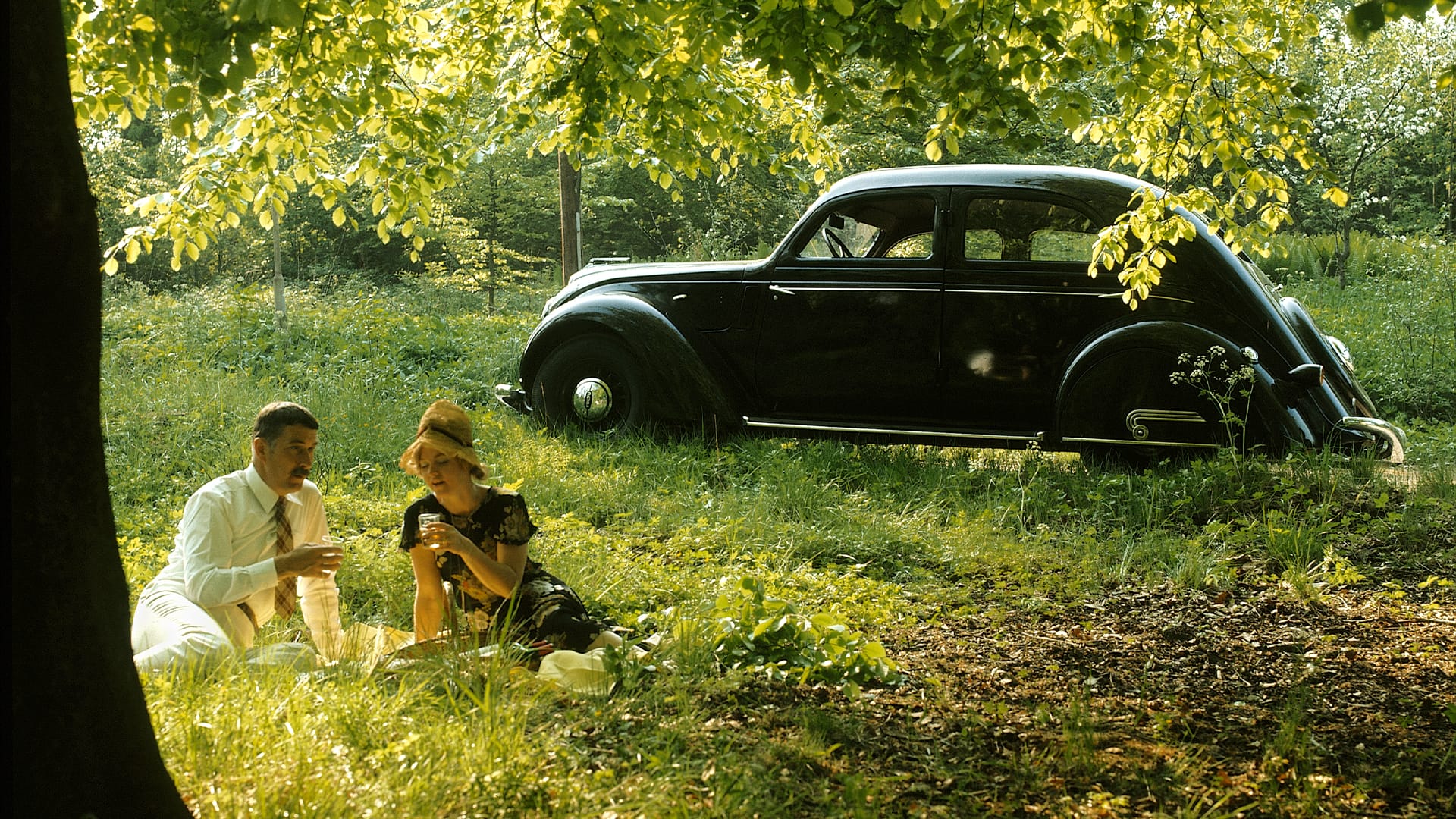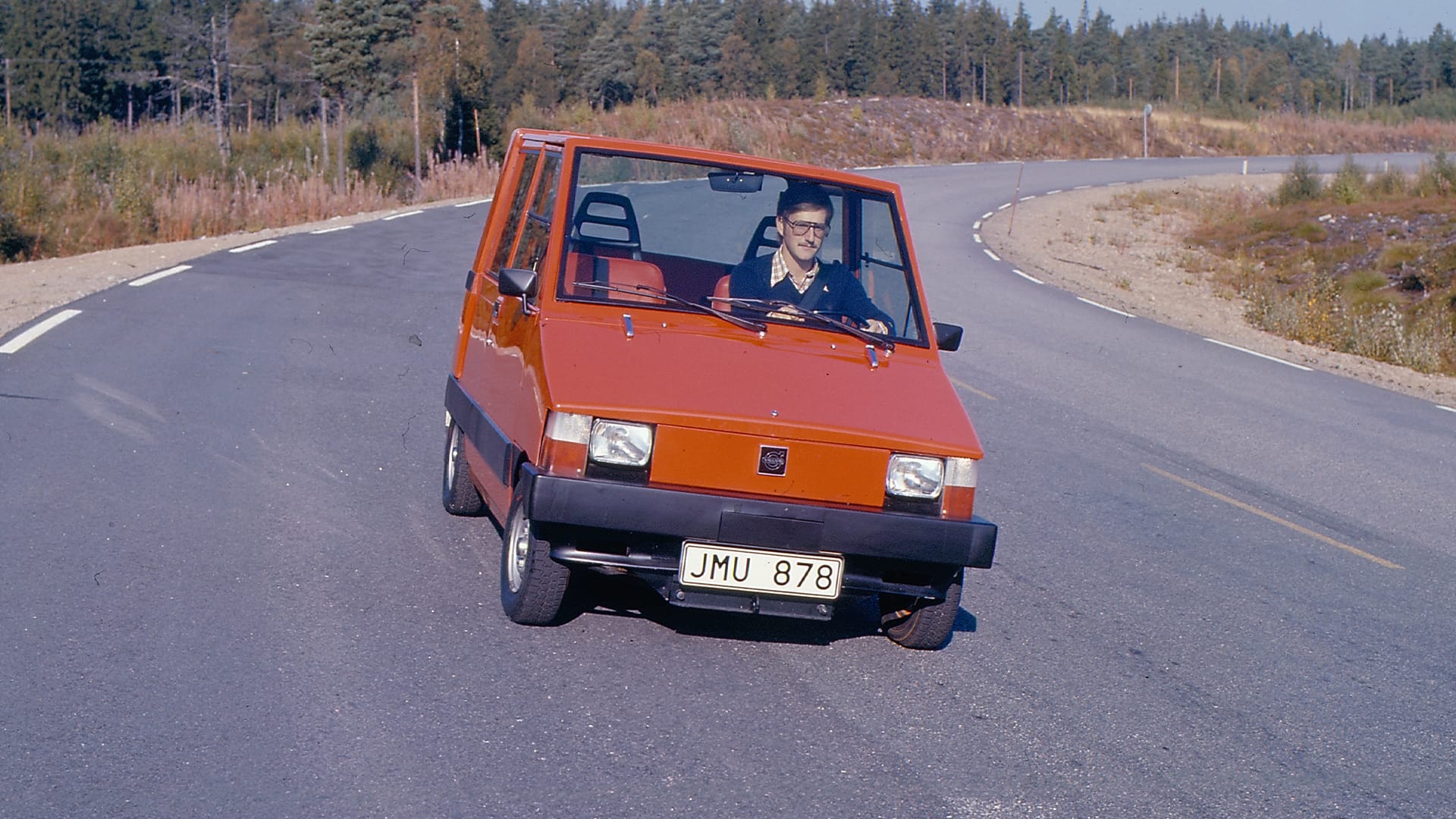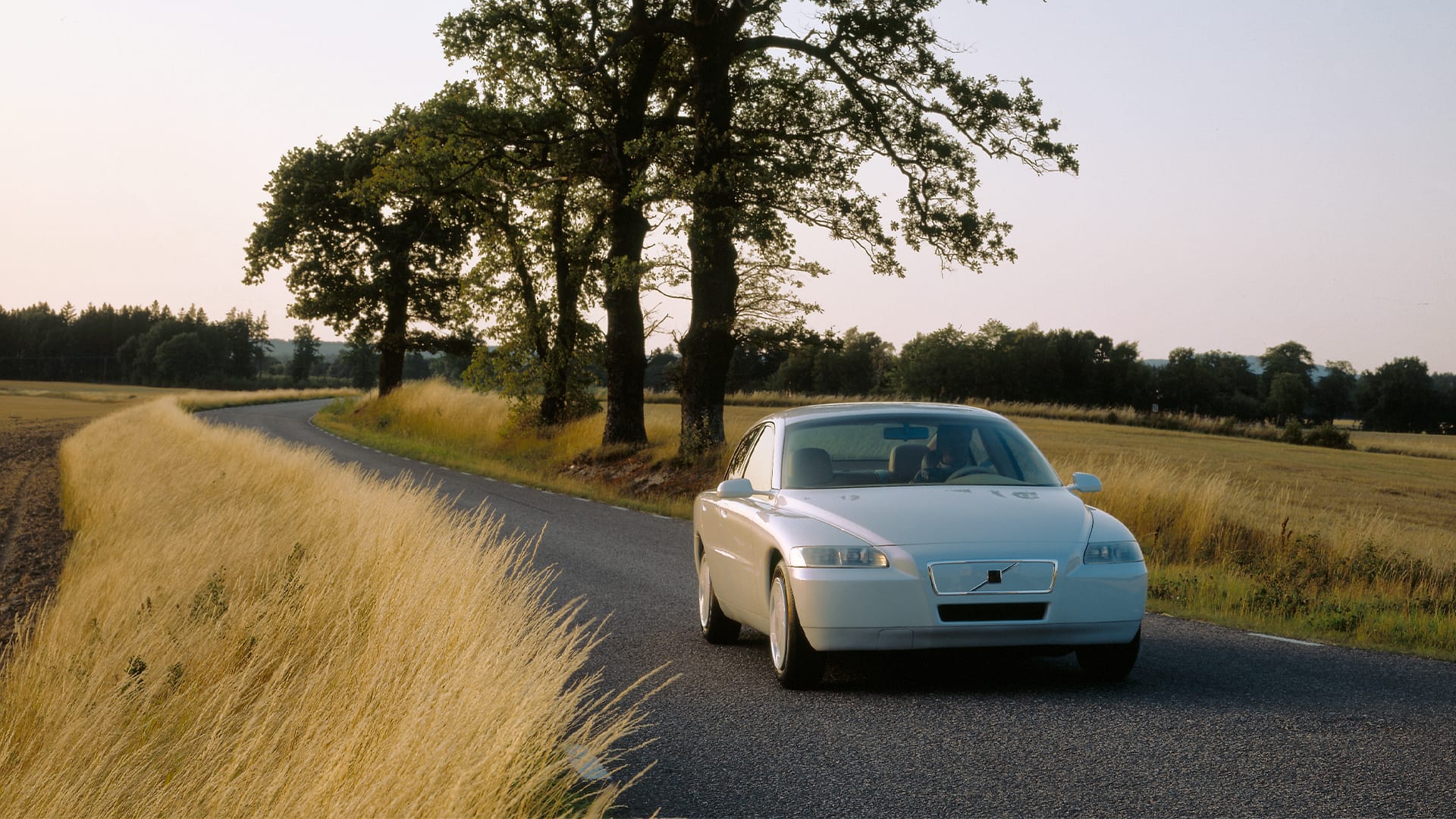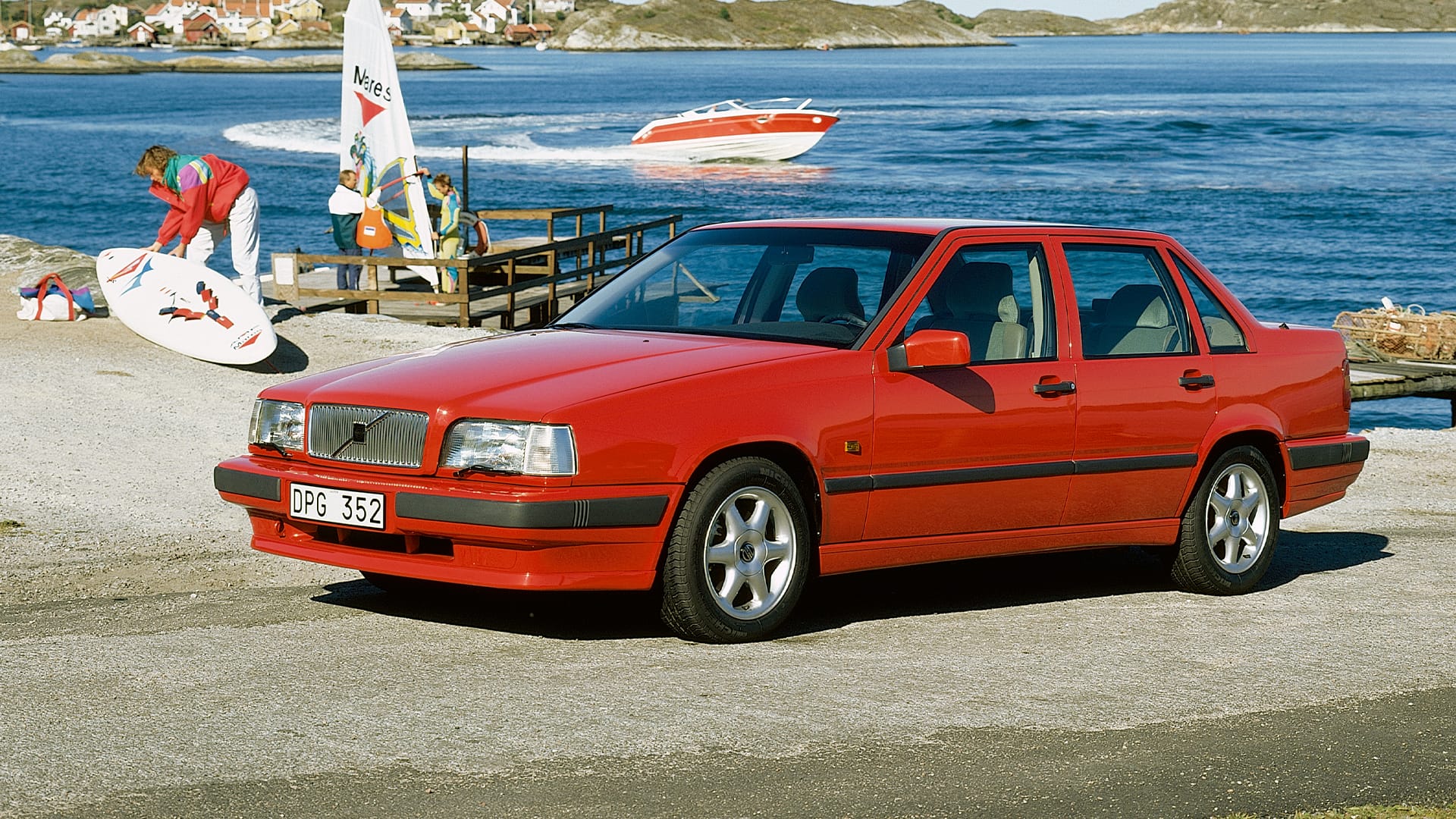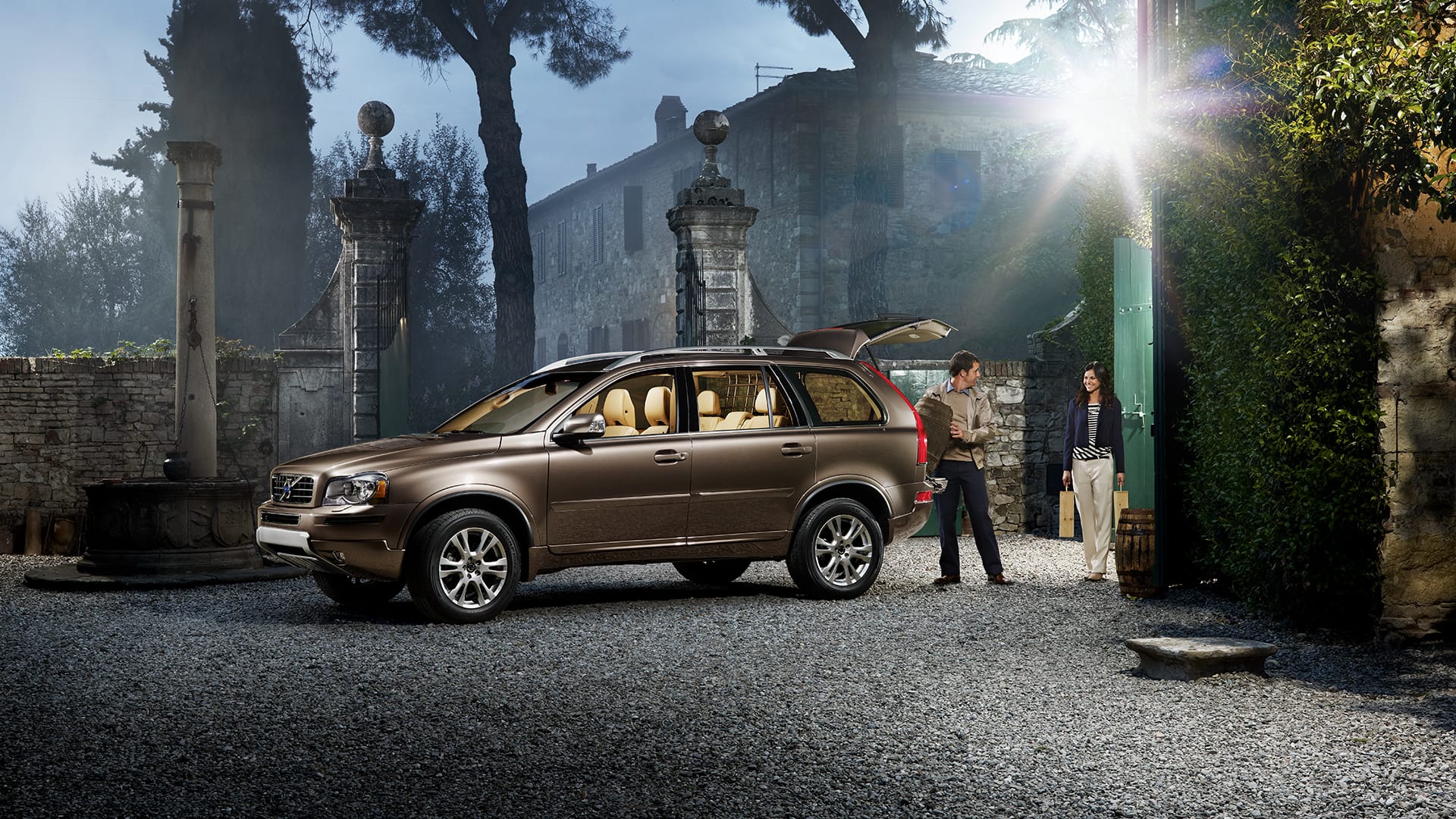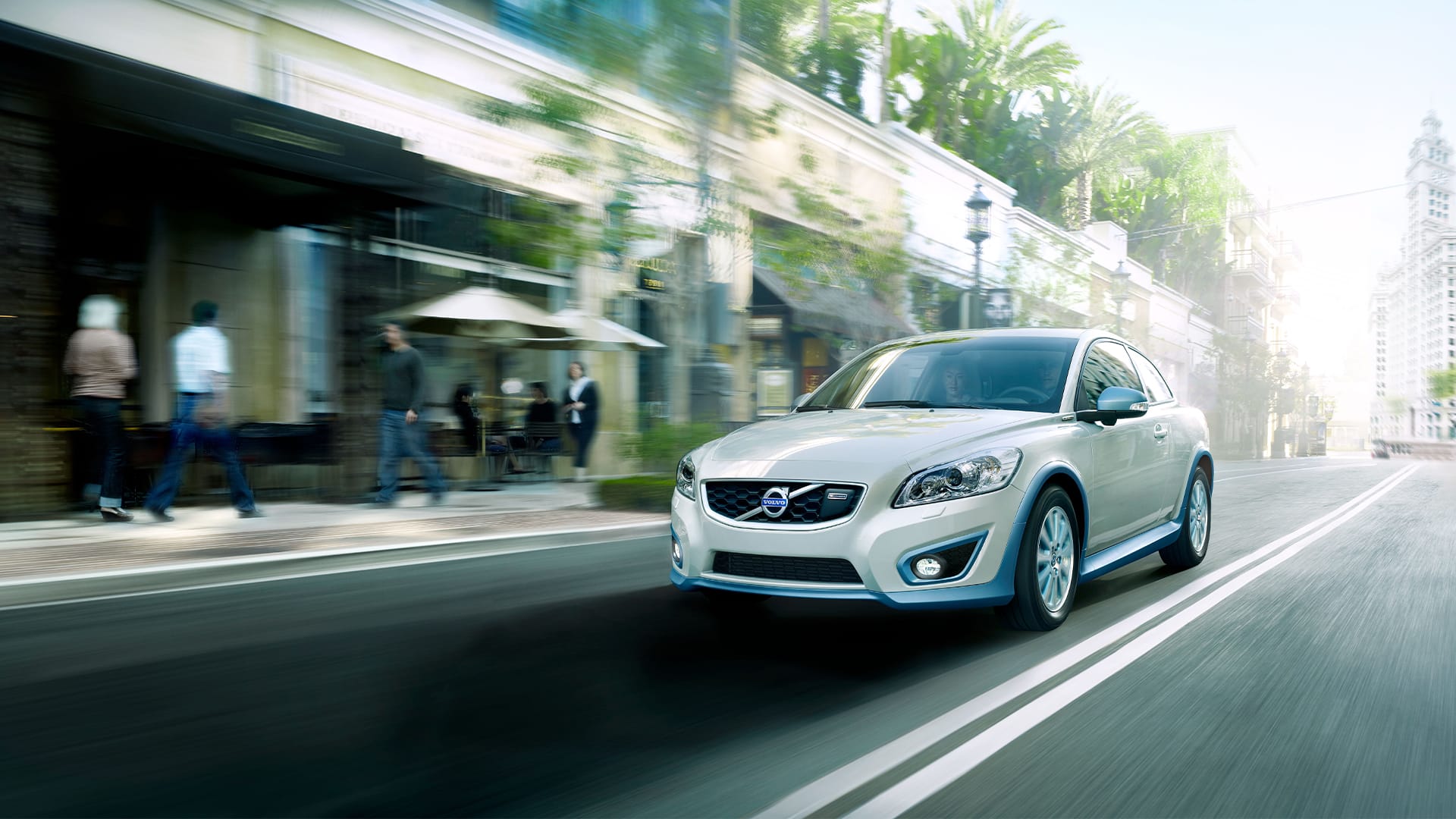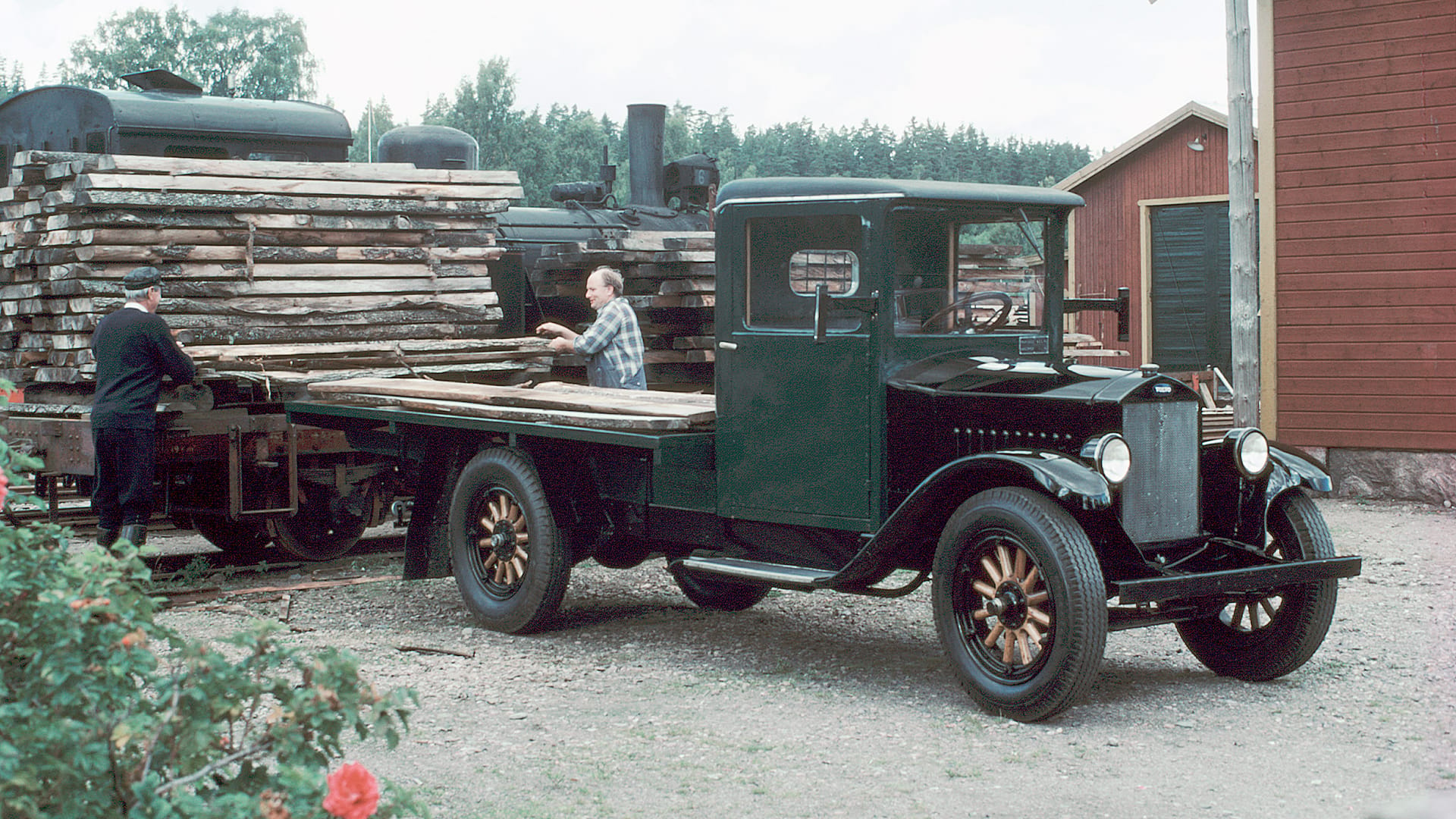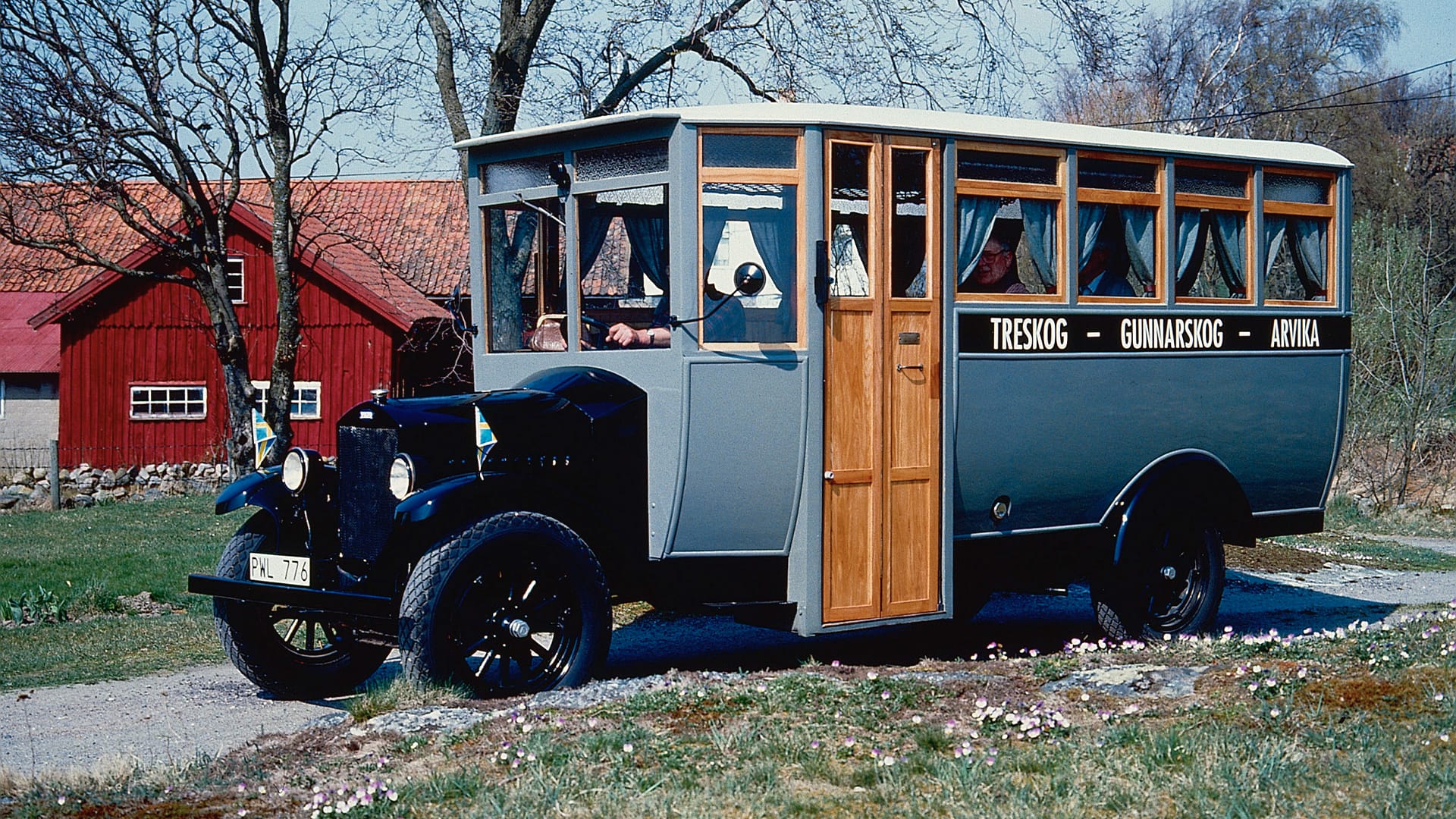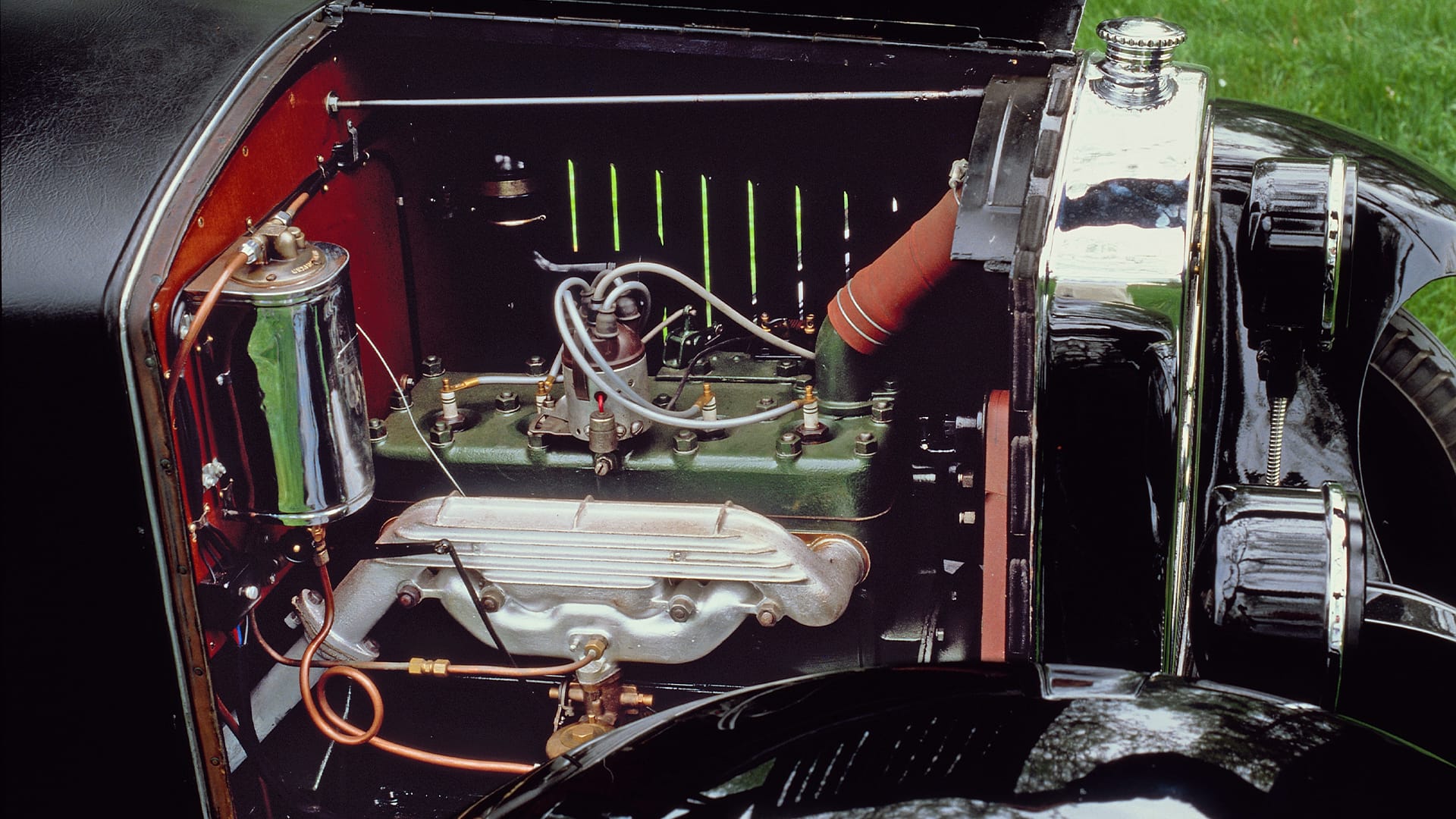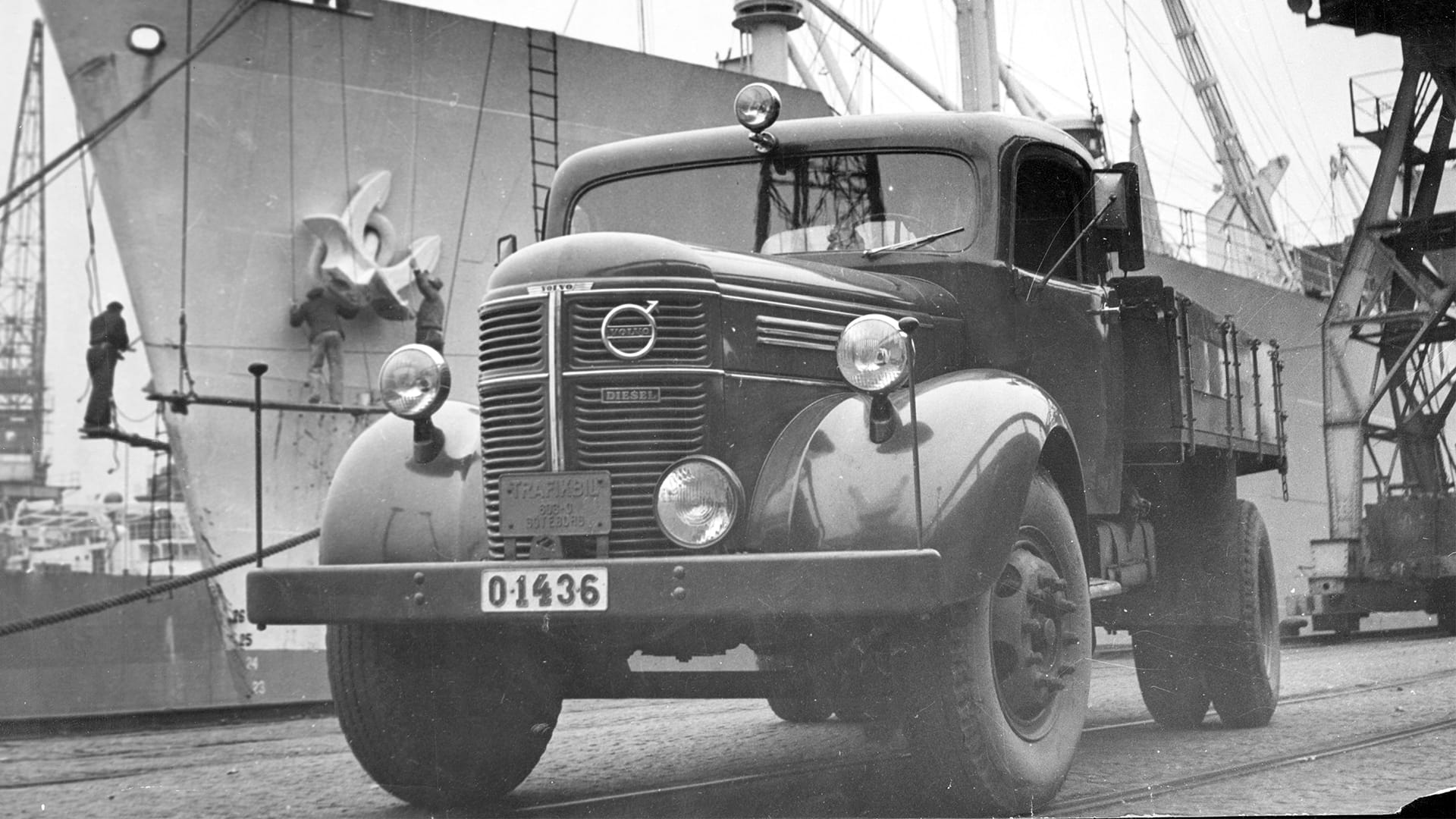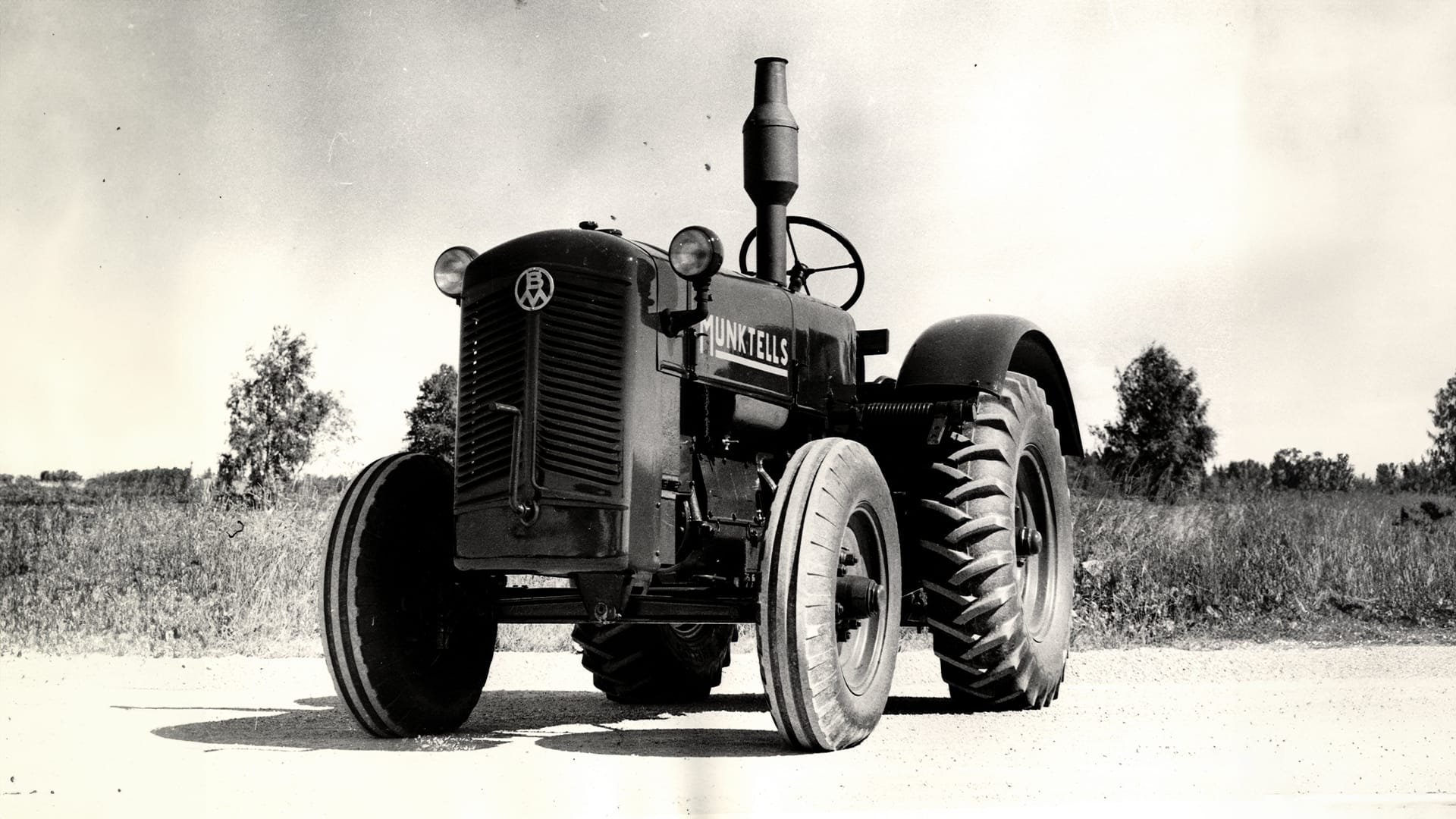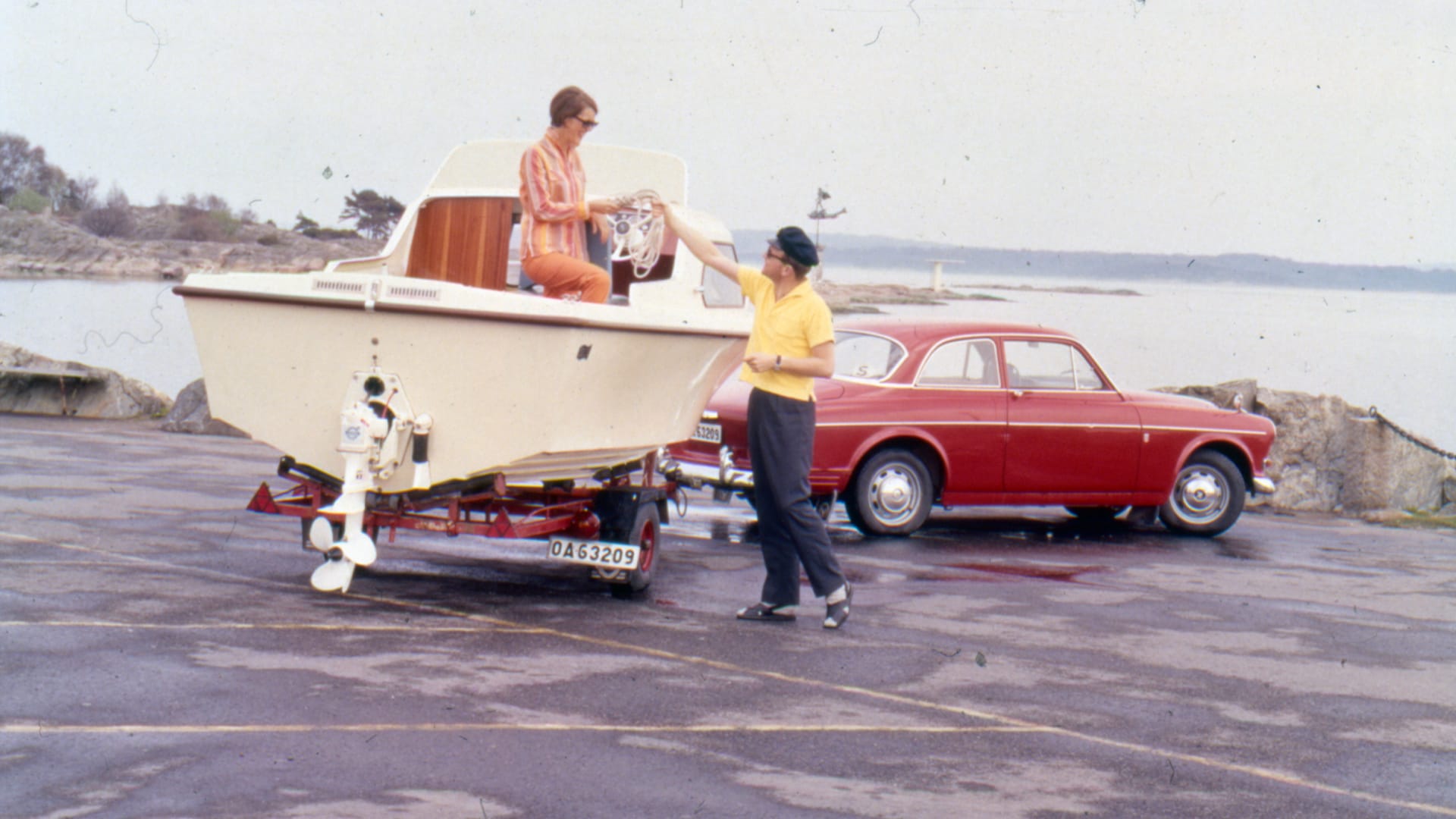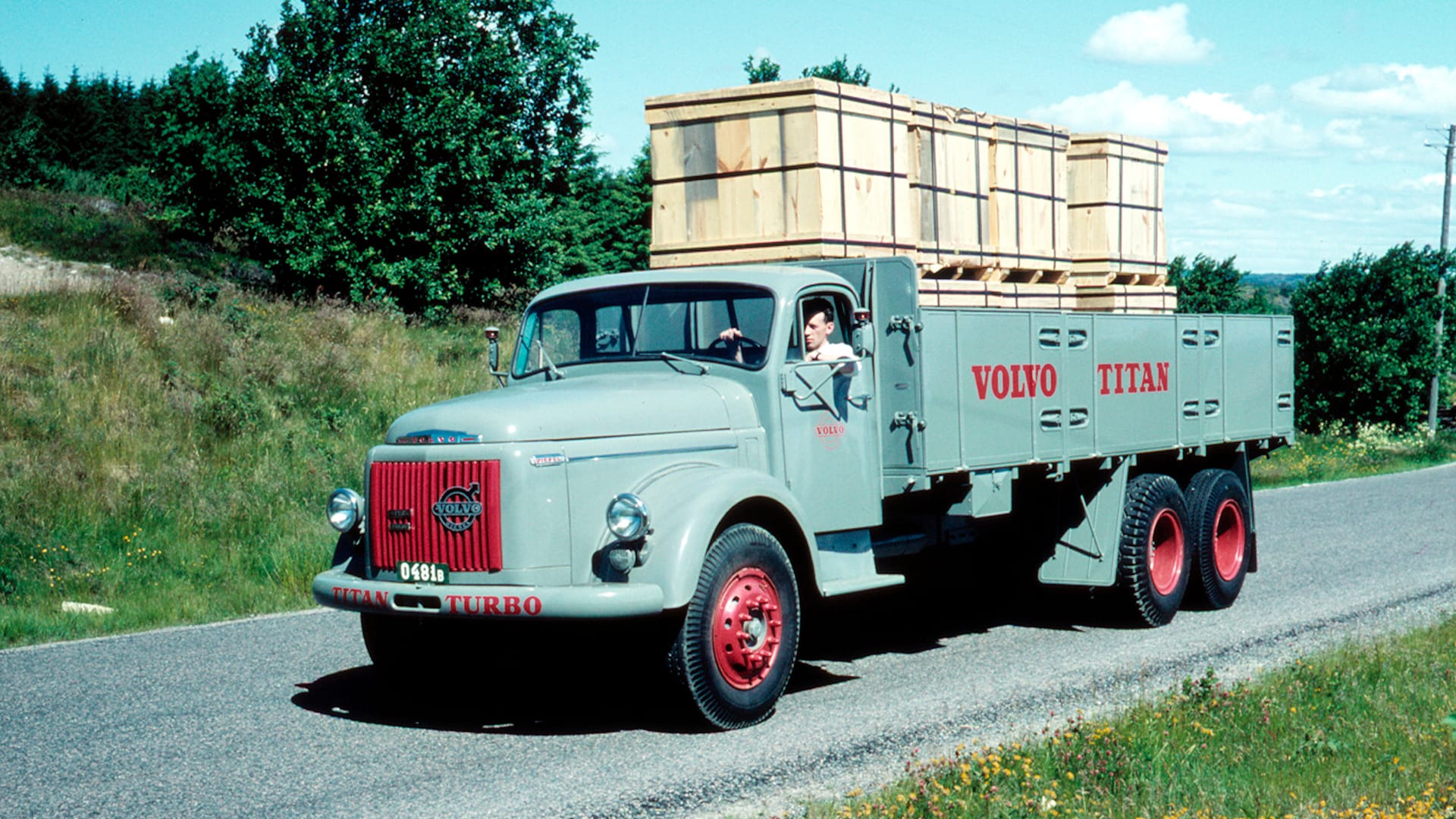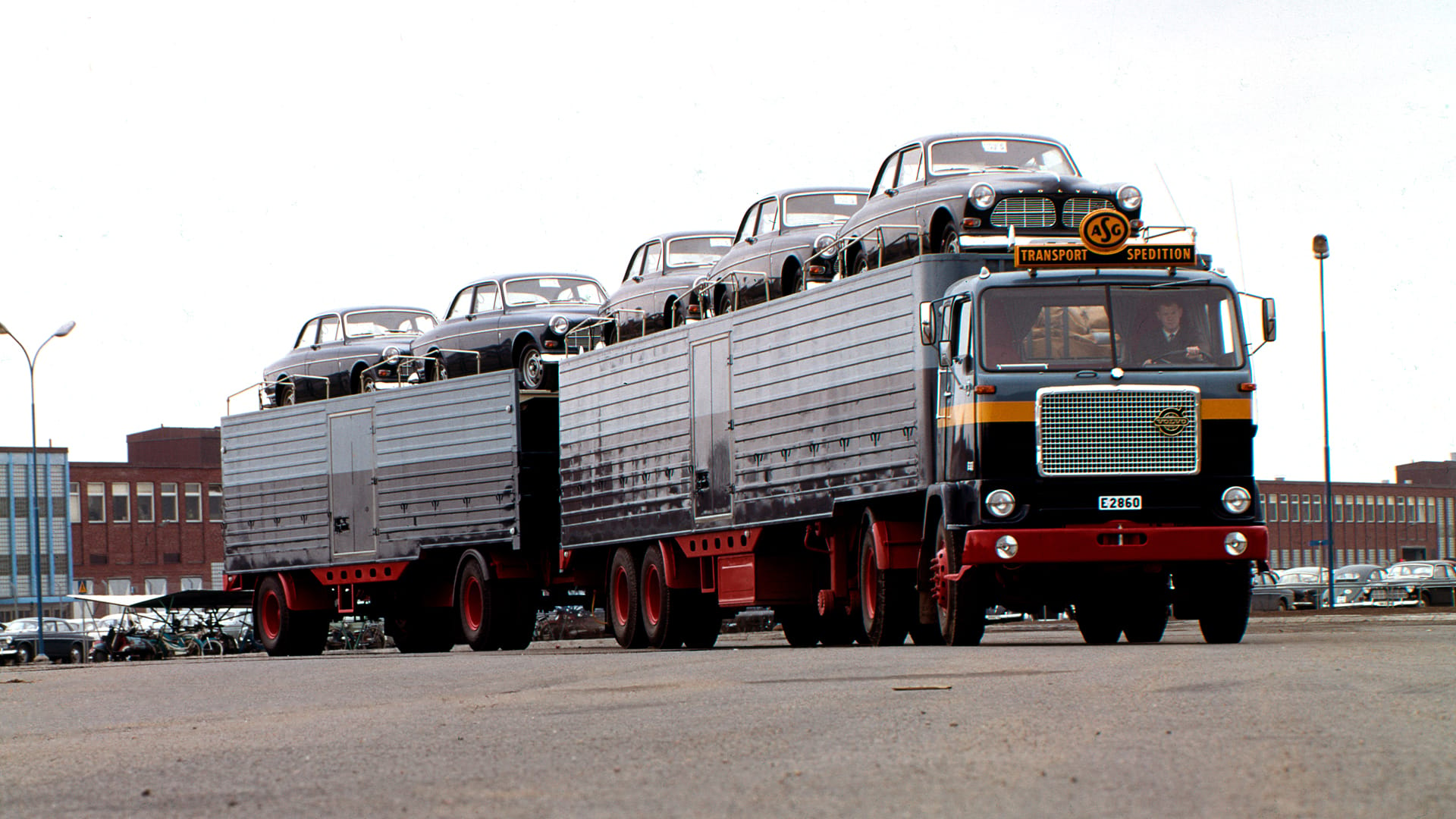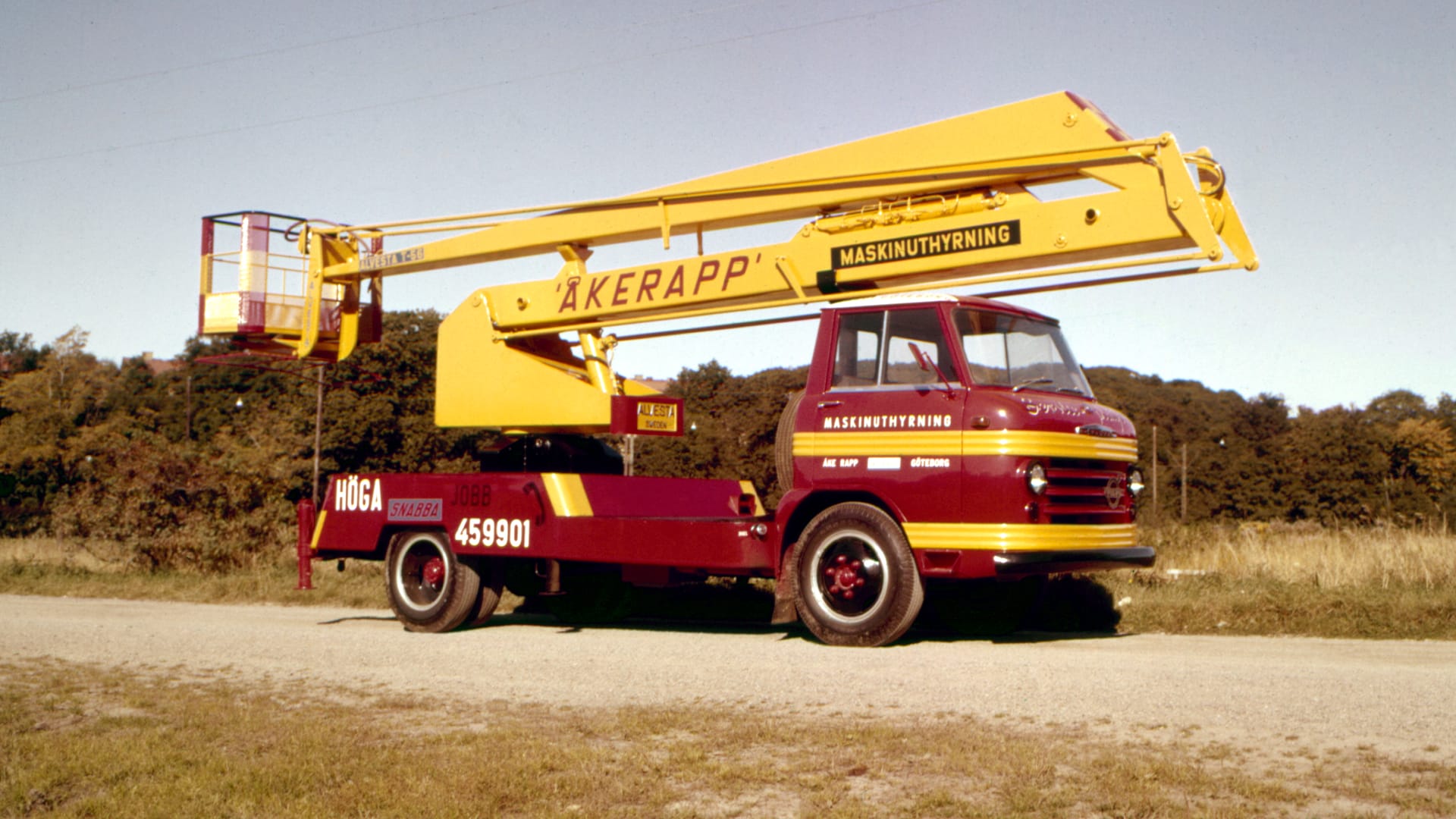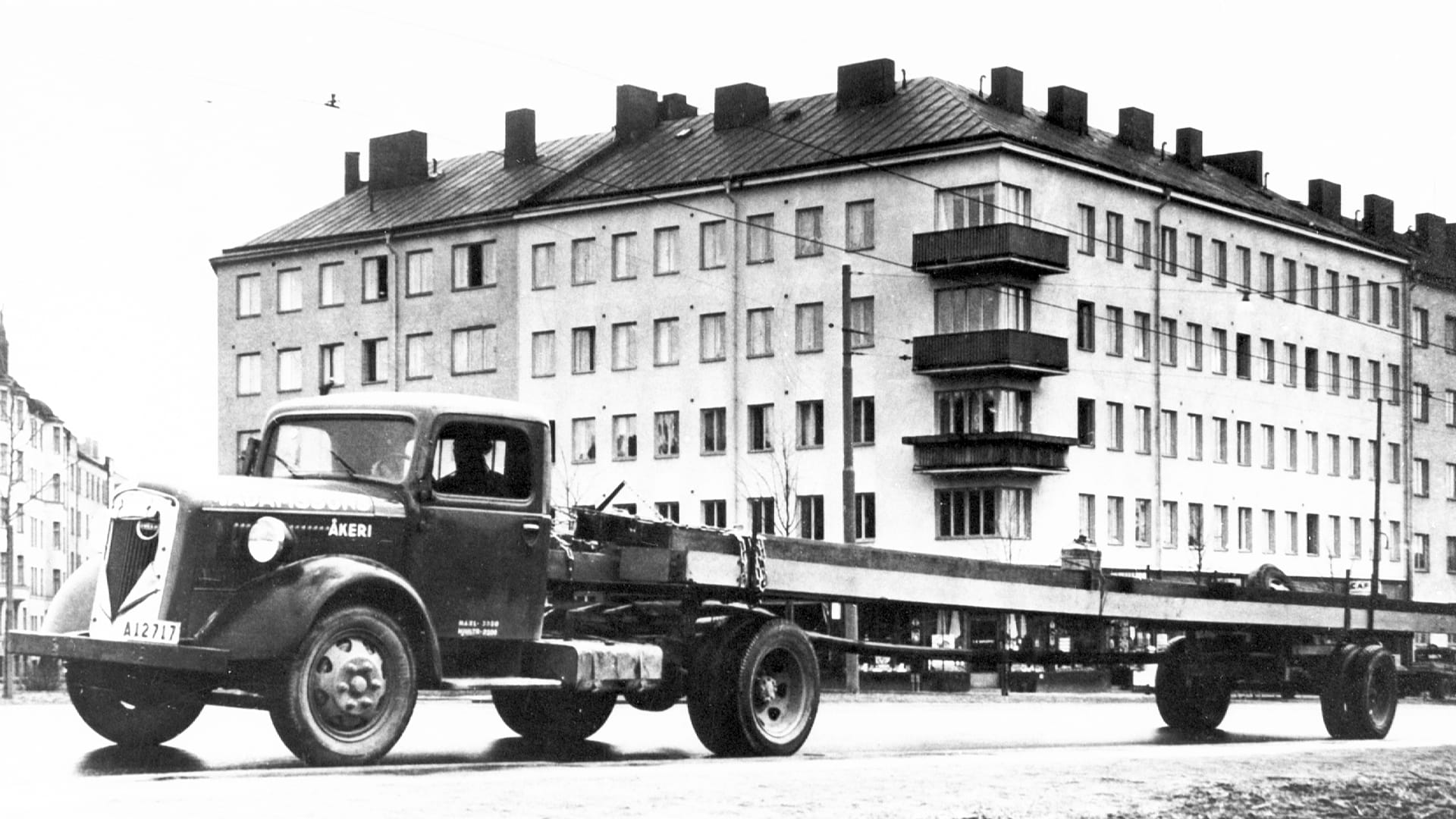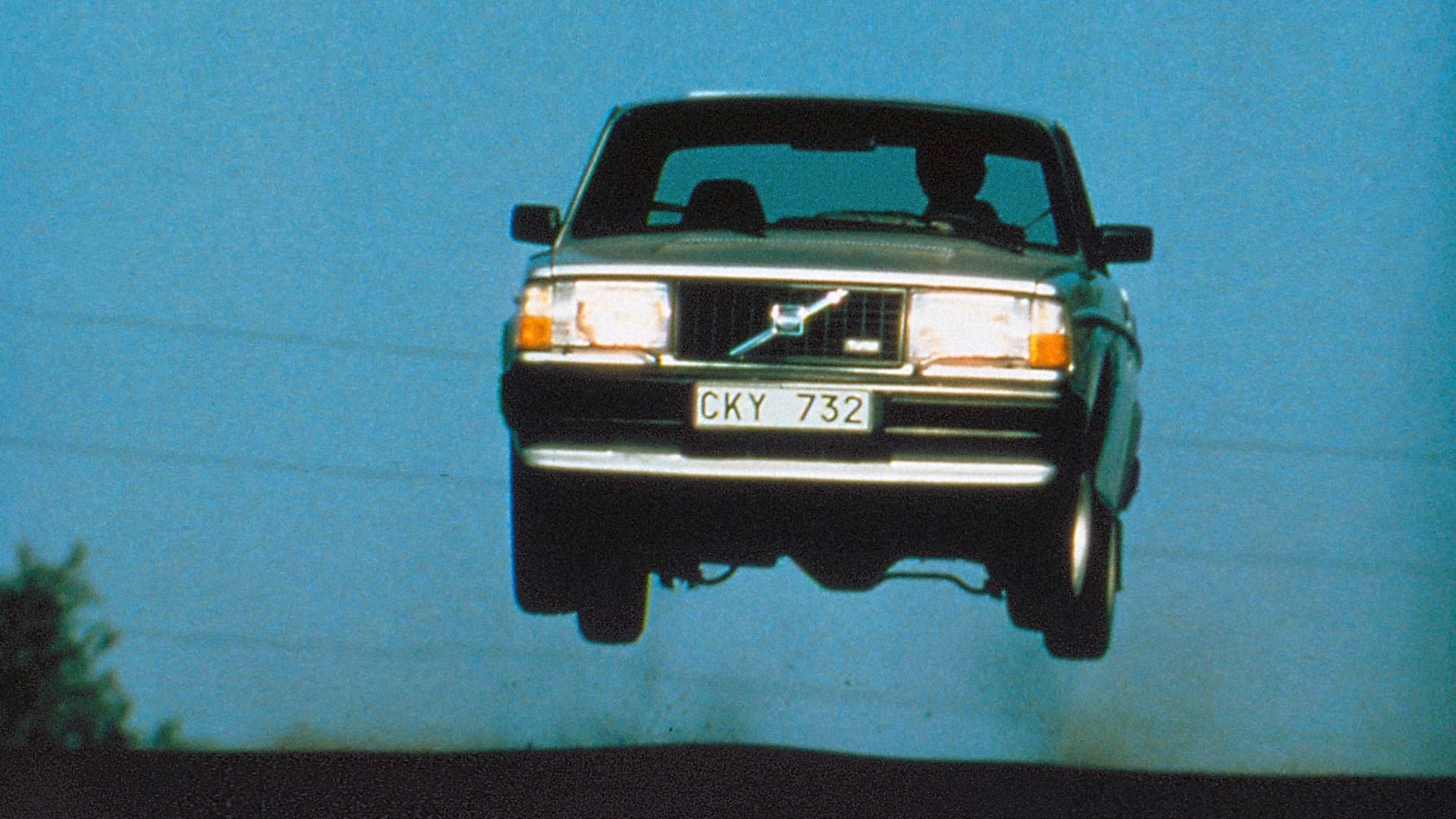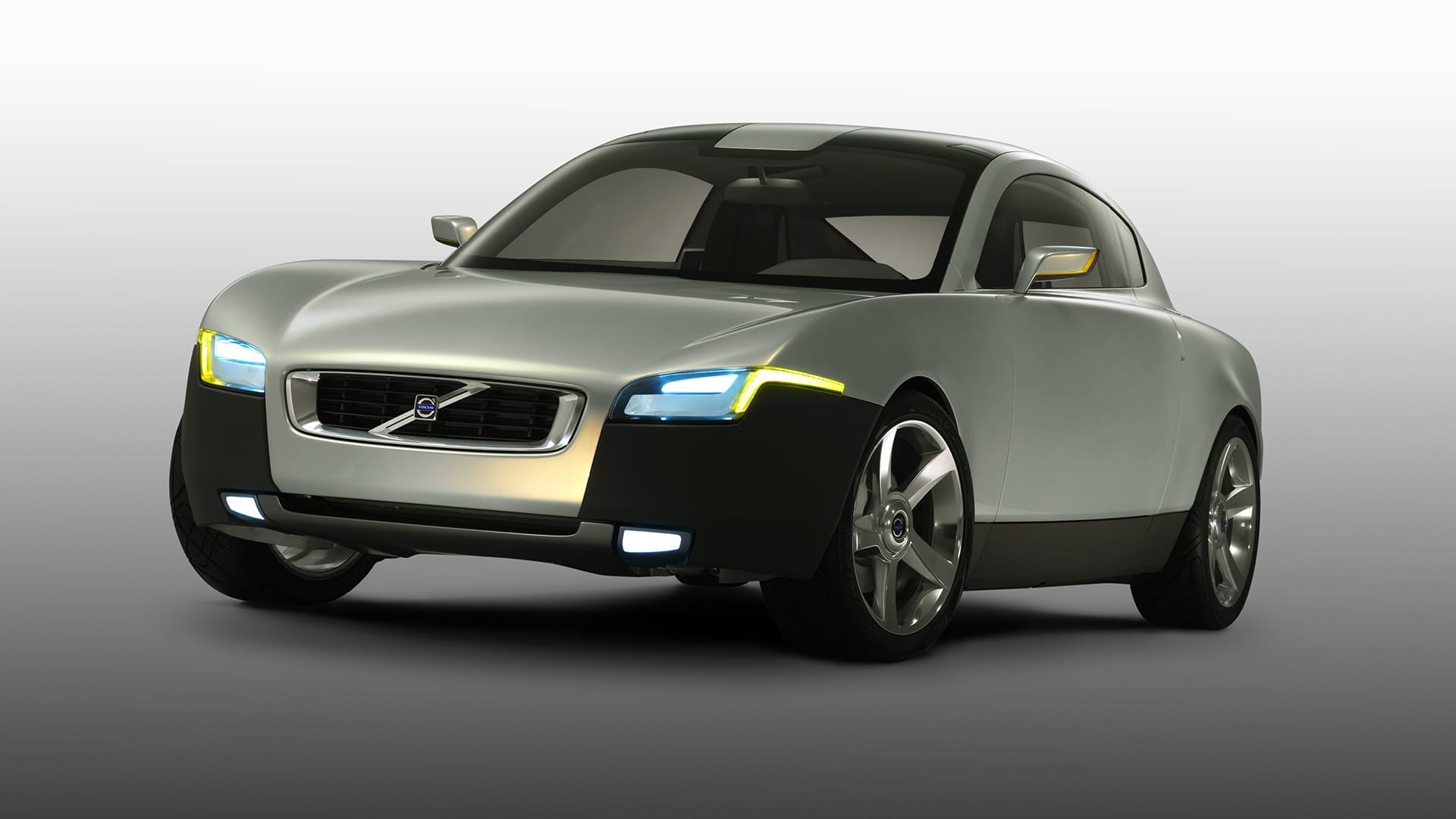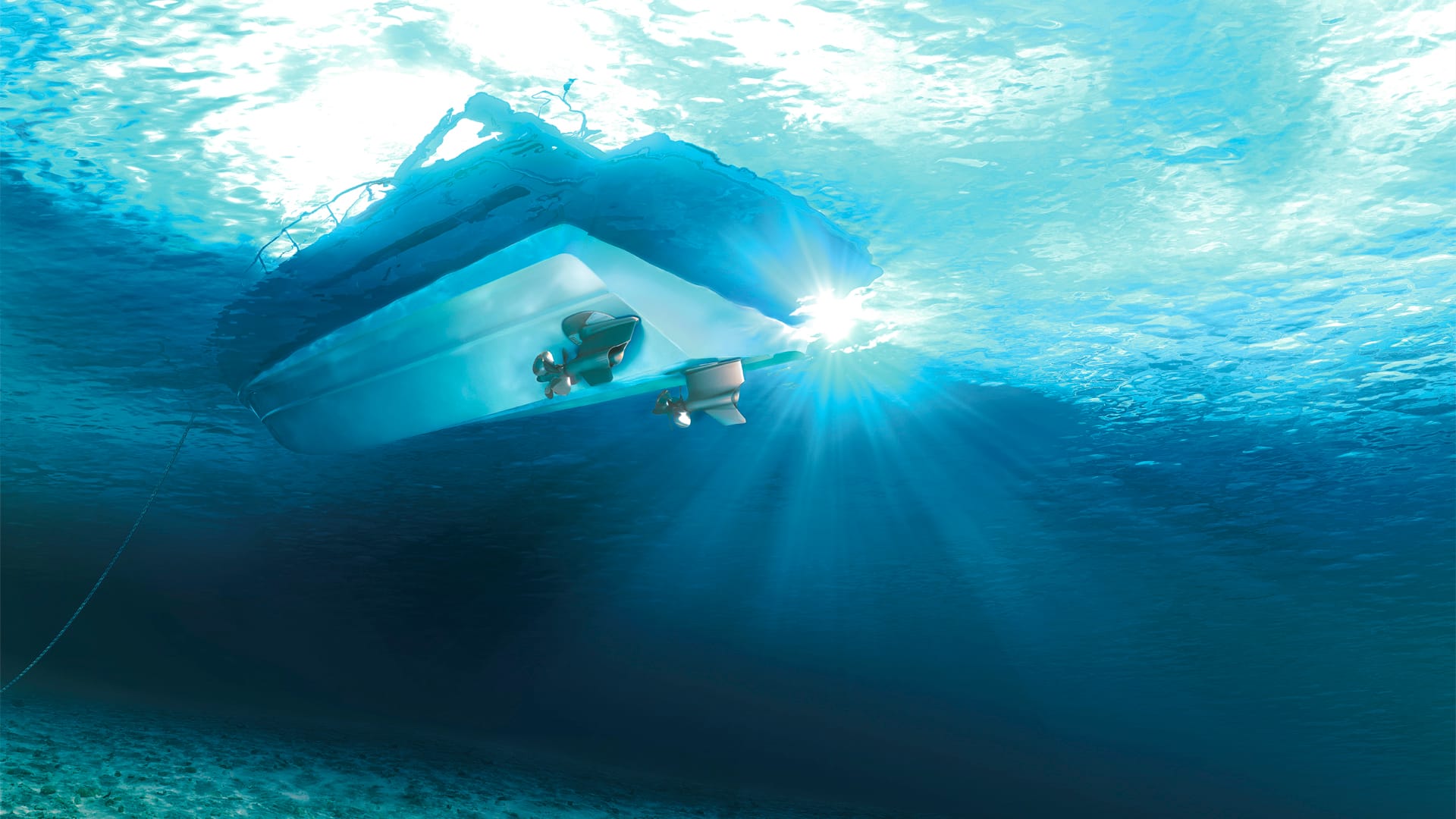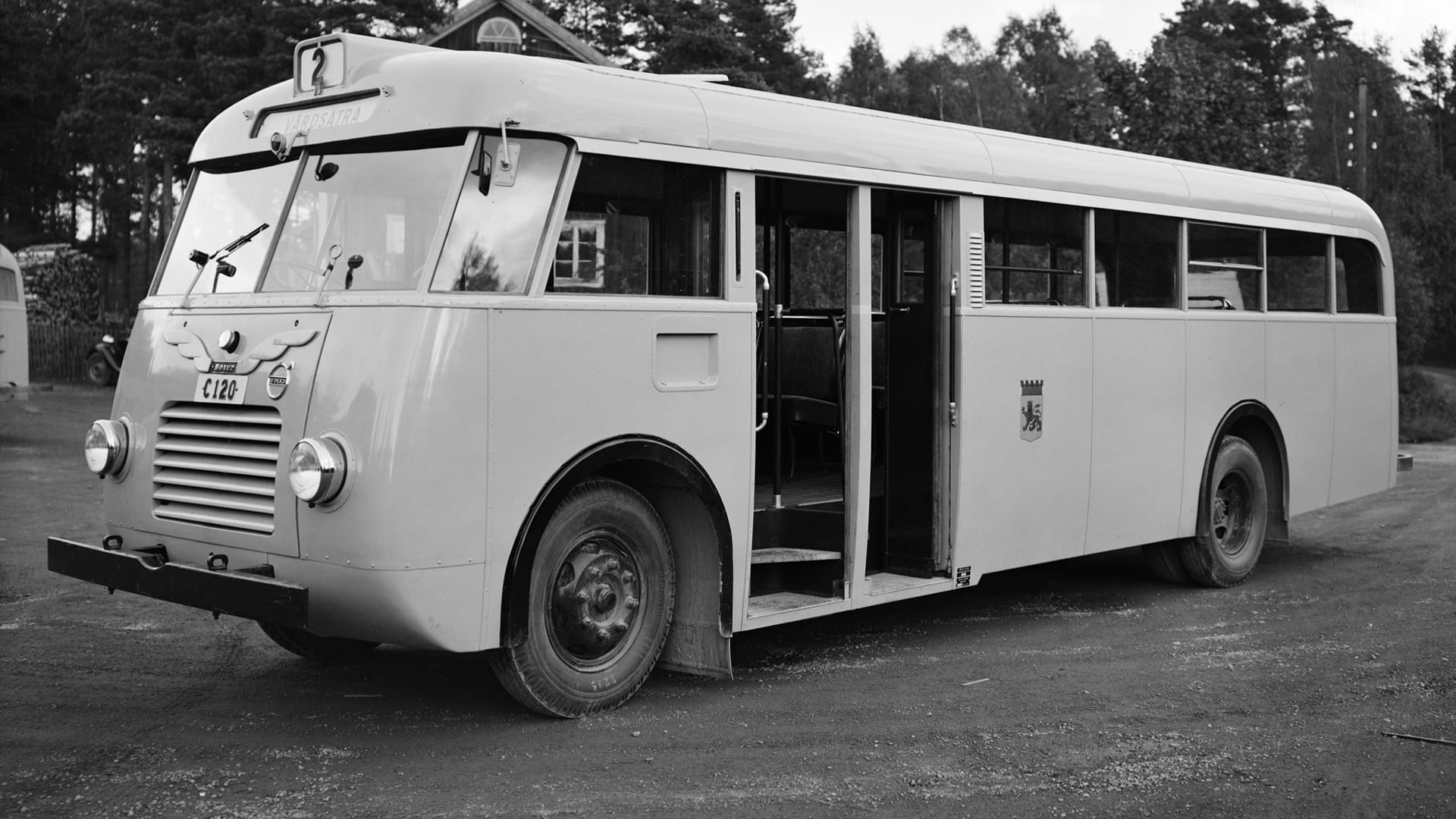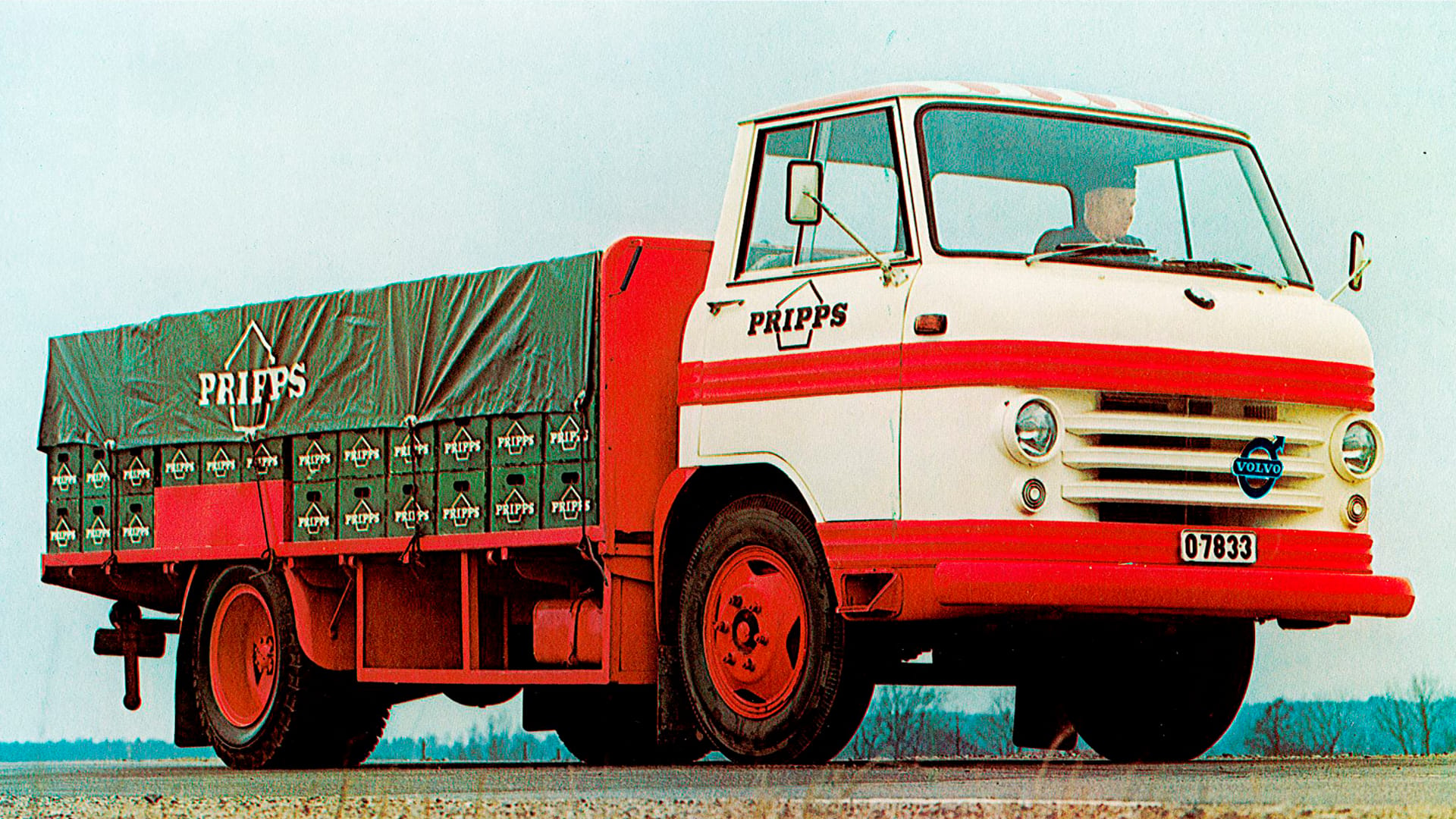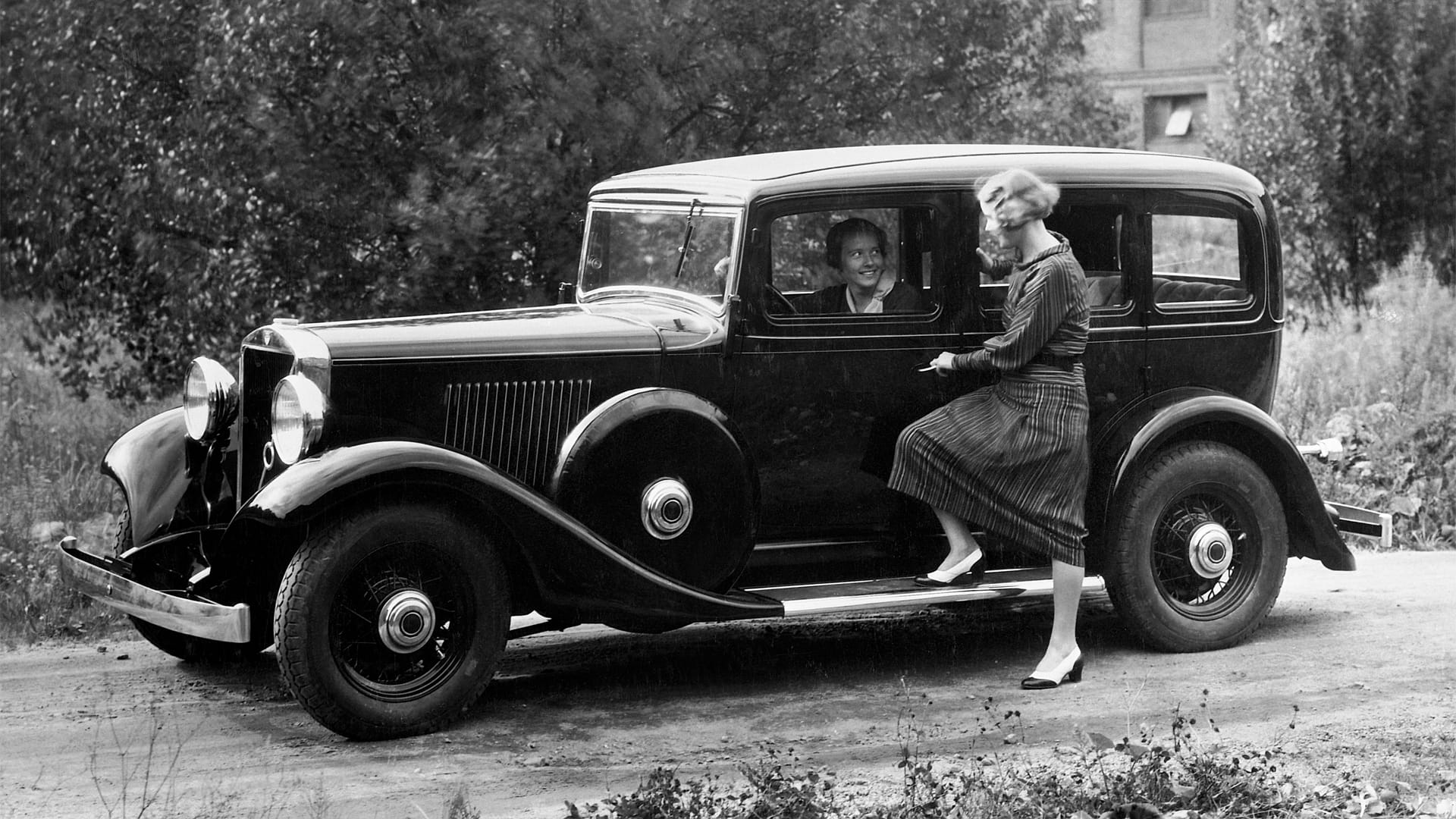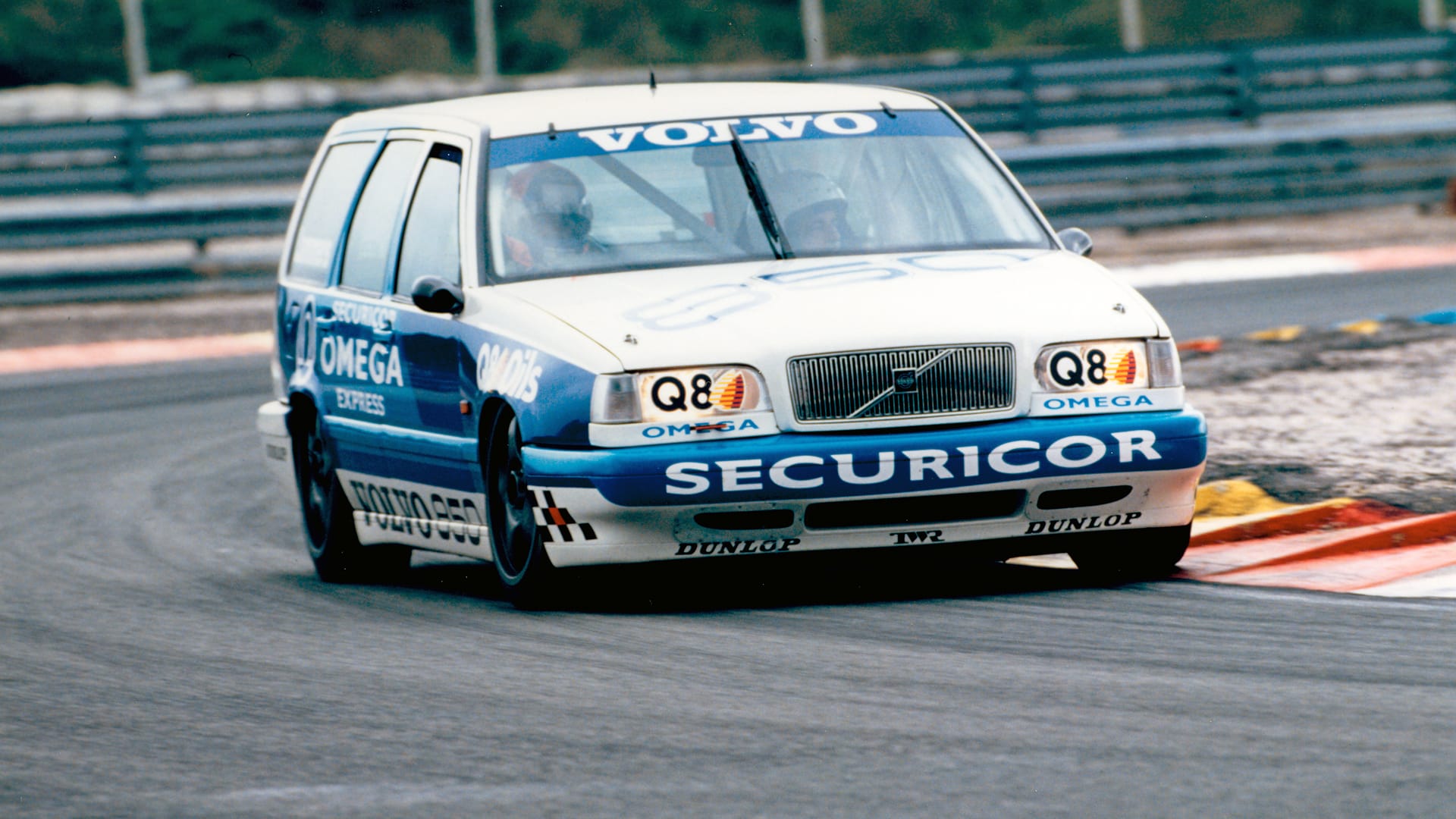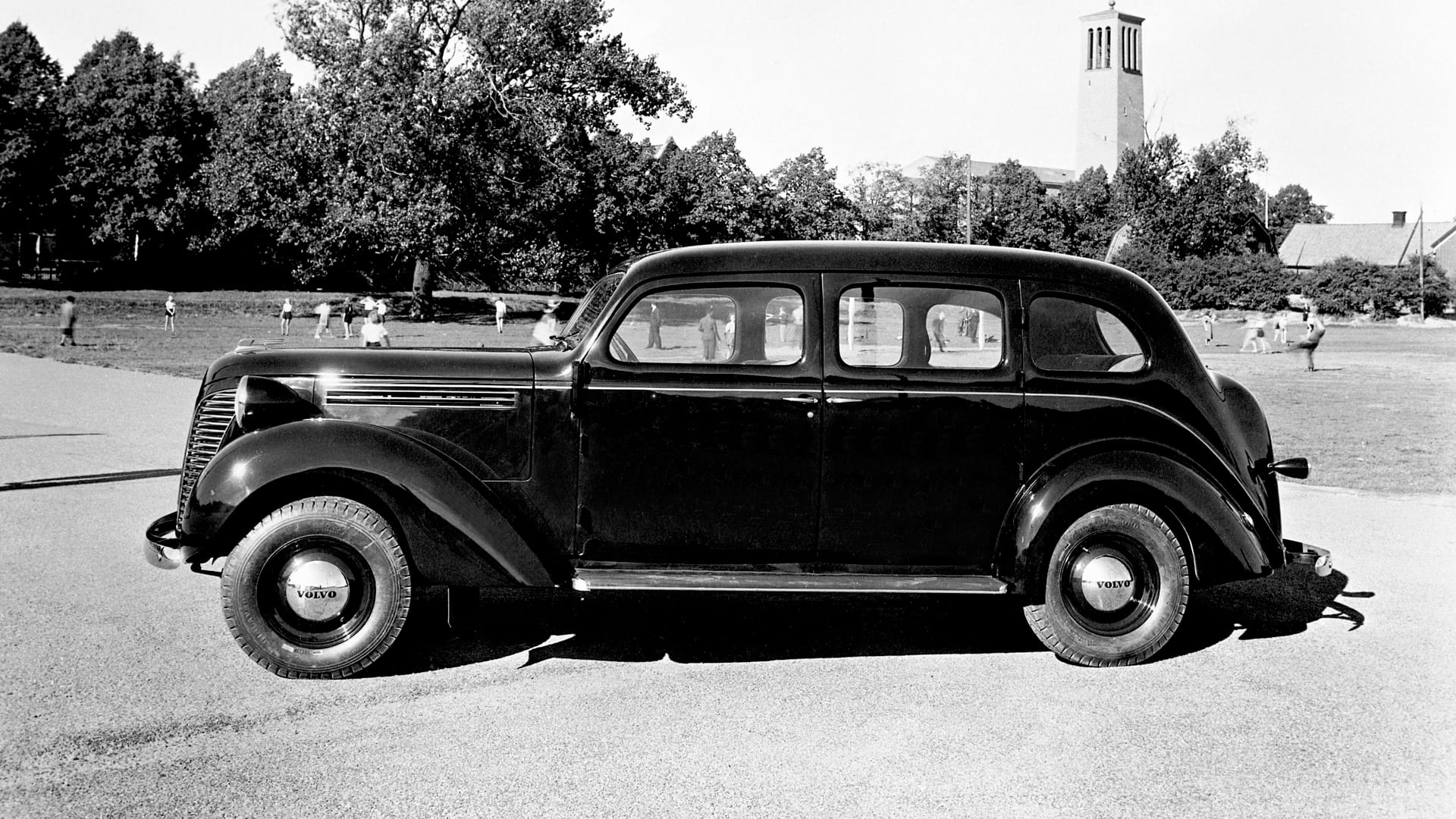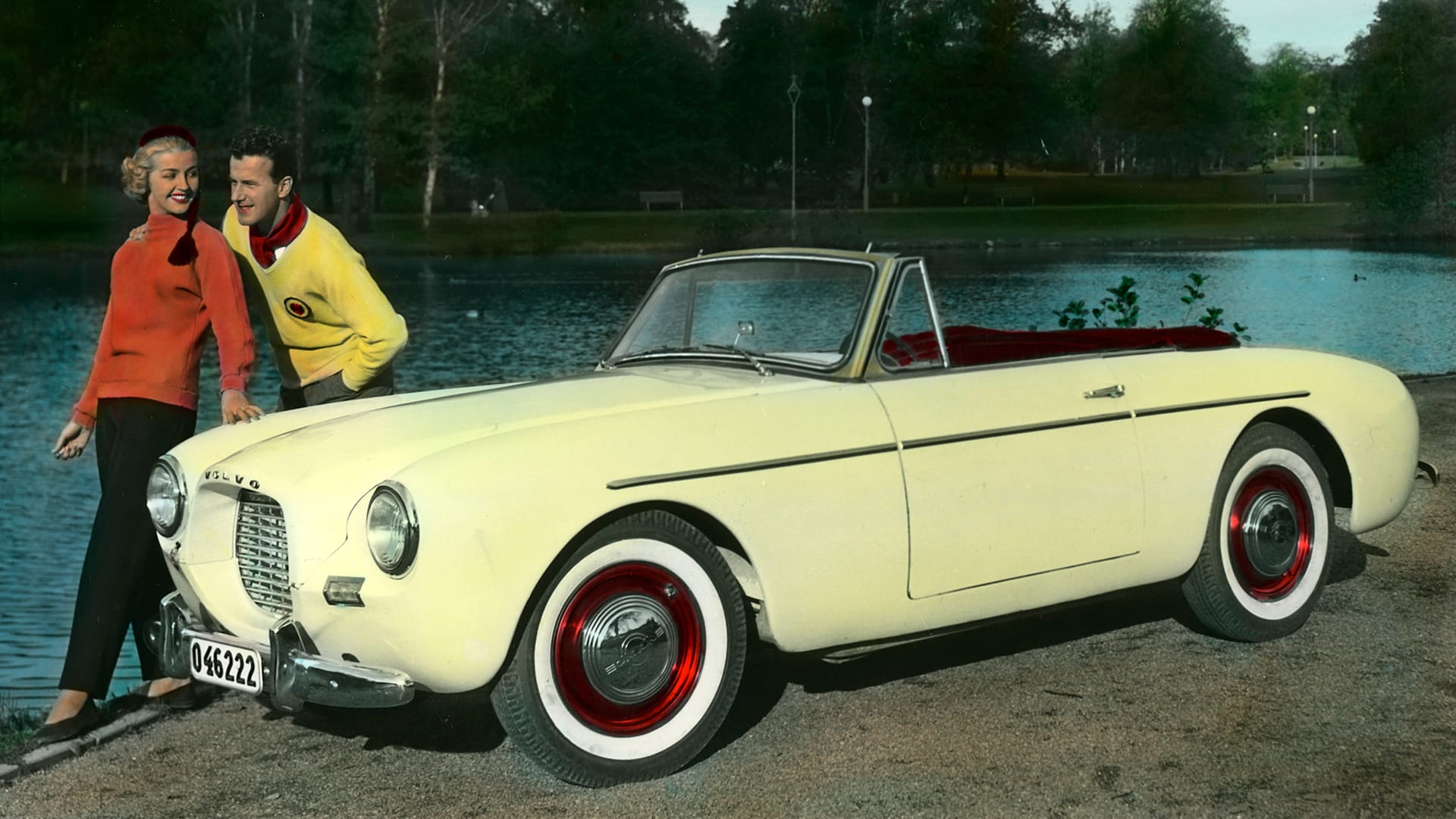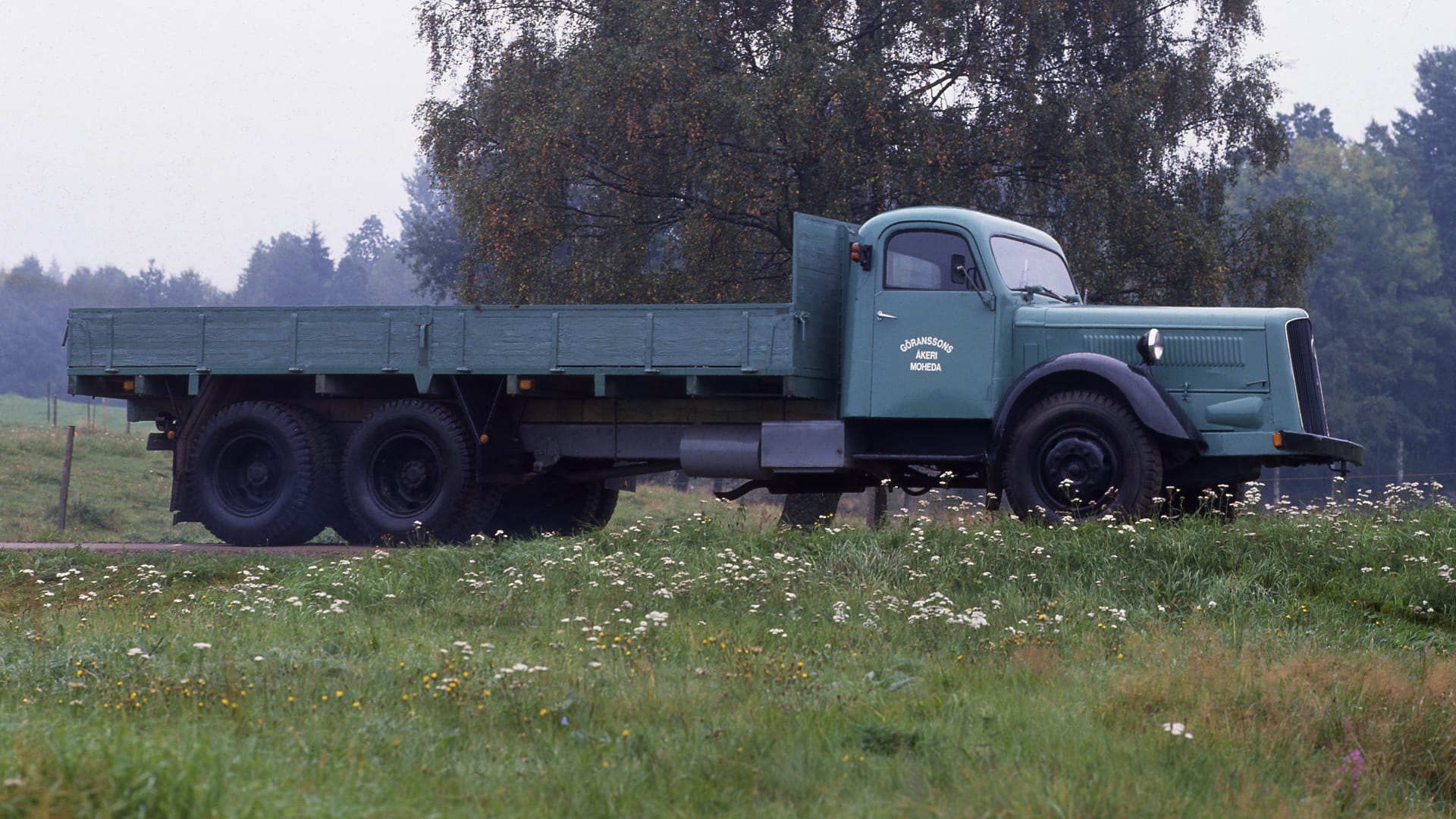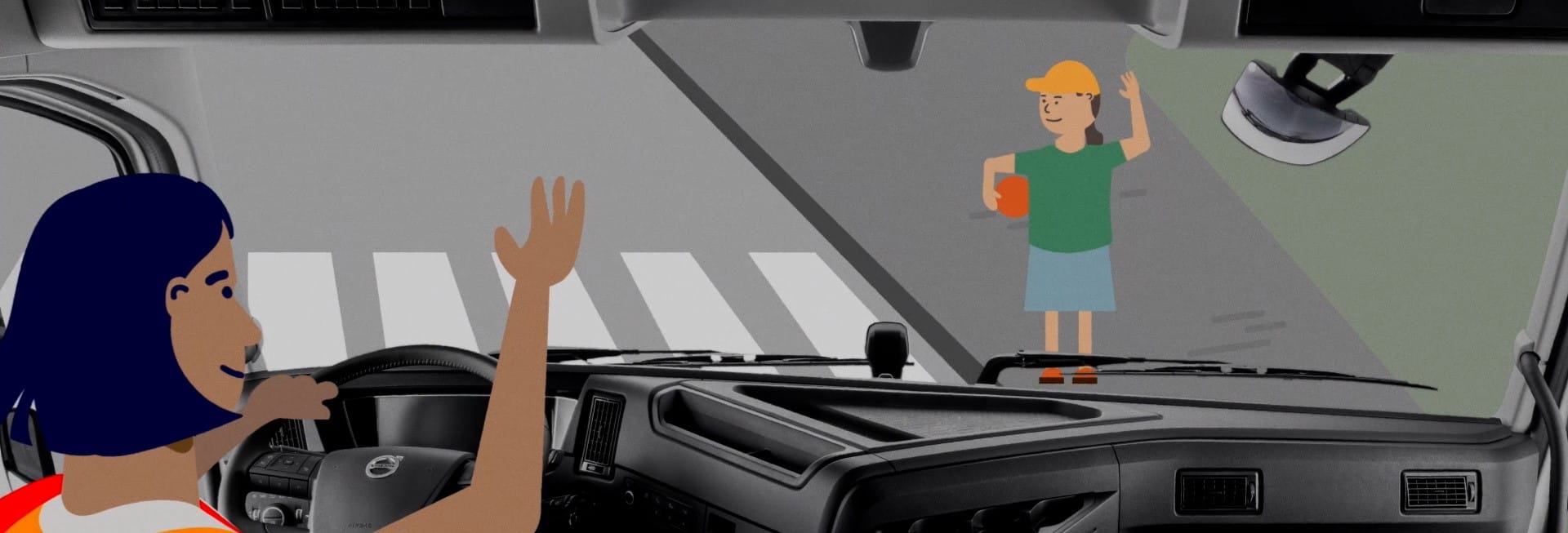Volvo PV444
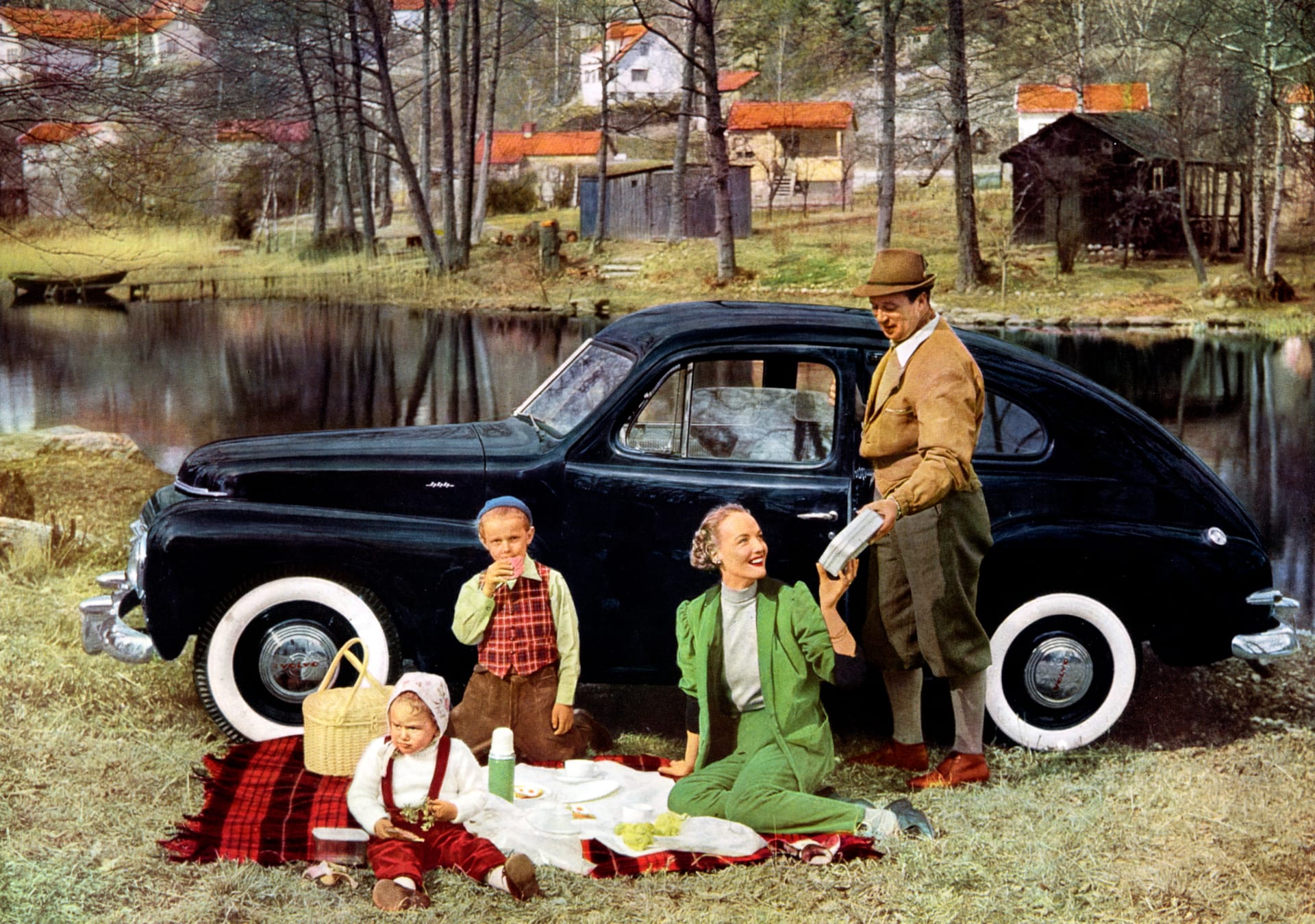
Can a car be a symbol of hope?
While World War II rages across Europe, Sweden prepares for the debut of a new car model crucial for Volvo's success.
In September 1944, the PV444, known as the Peace Car, is unveiled to the public. Volvo rents the Royal Tennis Hall in Stockholm to showcase its various activities, from tanks and airplane engines to civilian innovations. Hope lies on an end to the war, and the PV444, "the little Volvo," is designed to meet the post-war demand for a simple, sturdy, and affordable car.
Priced at 4,800 kronor, the same as the ÖV4 20 years earlier, it becomes a true people's car. However, due to material shortages like steel and rubber, the first car isn't delivered until 1947.
From trucks to cars
From its inception in 1927 and for 20 years forward, Volvo annually produces more trucks and buses than cars. However, in 1949, the tables turn as passenger cars take the lead.
The turning point is the model launched in 1944, amid a raging war but not mass-produced until 1947: the PV444. Dubbed the "Peace Car" from the start, it hints at the war's end. The decision to make this car is made in a brief exchange between Volvo's founders, Assar Gabrielsson and Gustaf Larson.
The decision and the design
"I think it'll sell," says Assar Gabrielsson one bleak day in March 1944 as they observe the first full-scale wooden model. Gustaf Larson agrees, and the decision is made. In hindsight, this decision proves pivotal in Volvo's history.
The discussion about a smaller model began in the 1930s. The dominance of large American cars wanes in favour of smaller, more economical European models from brands like Peugeot and Renault. Volvo dealers complain, and various proposals are considered.
By 1943, Volvo's management realizes there will be a demand for smaller, cheaper cars post-war. With much of the global car industry struggling, Volvo could seize a significant market share at home and boost exports.
The key players
Helmer Petterson, a key figure behind the PV444 project, proposes the idea during a trip with Assar Gabrielsson in 1942. Petterson is recruited as the project lead, and a team of technicians is assembled.
The PV444 breaks Volvo's tradition by adopting a self-supporting body, departing from the frame-on-body construction. The chassis, inspired by American models, features coil springs in both the front and rear.
The prototype and the exhibition
The first prototypes of the PV444 are made in 1944. One is rushed for display at Volvo's exhibition in Stockholm's Royal Tennis Hall, where it steals the show.
Under the patronage of Crown Prince Gustaf VI Adolf, the car is unveiled amid fanfare and is met with great enthusiasm. Almost all Volvo employees attend the unveiling, invited by Assar Gabrielsson and Gustaf Larson to witness a moment they believe will shape the company's future.
The unveiling and the success
Staff from Gothenburg and Skövde travel to Stockholm, enjoying a mini-holiday. Each ticket costs 4 kronor and 10 öre, but the trip includes an overnight stay. They see the new car two hours before the exhibition opens to the public.
A PV444 is raffled off daily, attracting 148,357 visitors. Priced at 4,800 kronor, contracts for 2,300 cars are signed on the spot. It's a roaring success. When production begins three years later, the price rises to 8,000 kronor.
The production and beyond
Before mass production starts, the first handmade car tours Sweden, covering 3,000 miles and visiting all 76 dealerships. In 1946, Helmer Petterson himself embarks on a 300-mile journey on winding gravel roads.
Finally, in 1947, production begins, and the first two cars are delivered. In 1948, 2,988 cars are made, exceeding Volvo's previous production records. It's the beginning of a new era where passenger cars surpass trucks and buses.
In total, almost 196,005 PV444s are made before the PV544 takes over in August 1958.
